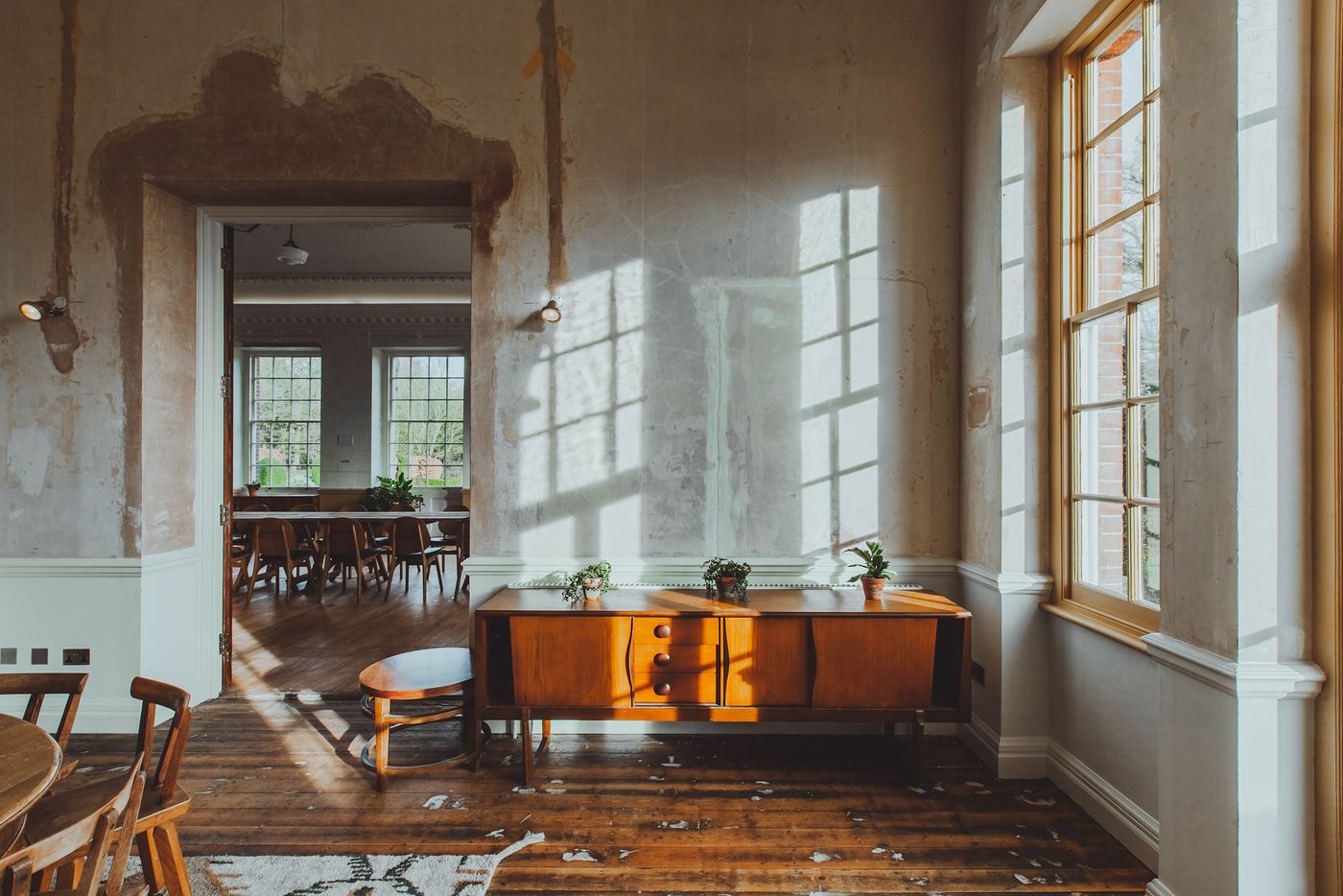
The Kintsugi-Inspired Soulfulness of Birch Hotel in Hertfordshire
Words by Eric David
Location
Cheshunt, United Kingdom
The Kintsugi-Inspired Soulfulness of Birch Hotel in Hertfordshire
Words by Eric David
Cheshunt, United Kingdom
Cheshunt, United Kingdom
Location
Opening a new hotel during a global pandemic may seem counterintuitive unless perhaps it has been conceived as “a next-generation escape hotel” that offers a tranquil getaway from the hectic lifestyle of urban living and constraints of modern life – and thus a chance to escape all the craziness. Such is the case with Birch, a new lifestyle hotel in Cheshunt, a 30 minute drive north of London that opened its doors in the summer, welcoming guests into a soulfully refurbished 18th century mansion that sits amid 55 acres of nature.
Designed by London-based architecture and interiors practice Red Deer in collaboration with the hotel’s founders Chris King and Chris Penn, Birch is an ambitious project which aims to upend both the traditional hotel lifestyle and the concept of luxury hospitality, as well as blaze a sustainability trail in terms of construction and resource management. With a wide range of indoor and outdoor activities, a wellness centre and a number of laid-back bars and farm-to-table restaurants to boot, while Birch offers everything one needs to disconnect and decompress from the daily grind, what makes the project stand out is its kintsugi-inspired philosophy of celebrating the beauty of imperfections whose underlying effect, besides the cool aesthetics, is to free guests from modernity’s pressures of perfectionism.
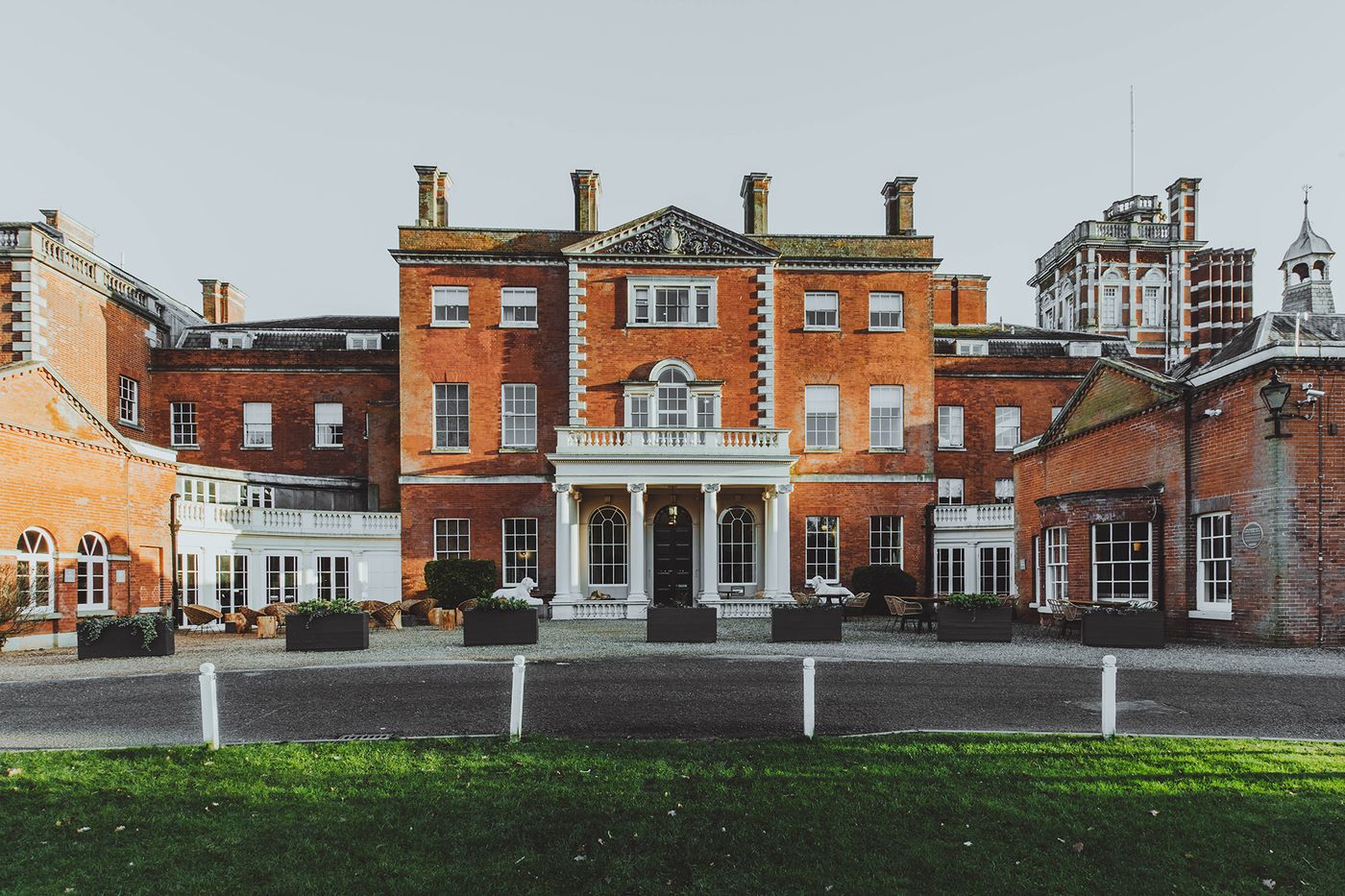
Birch is housed in a Grade II-listed Georgian mansion. Photo by Adam Firman.
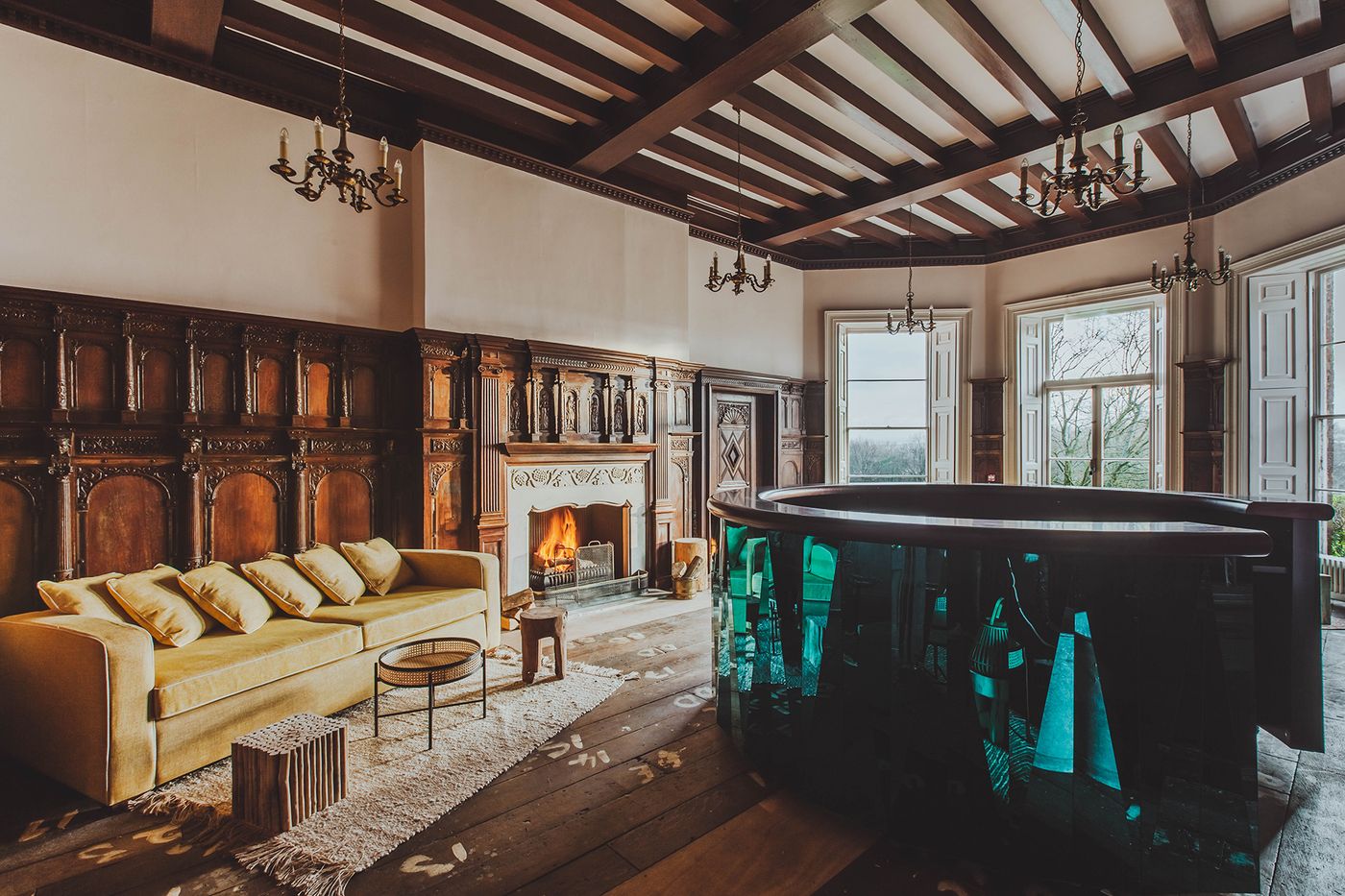
Reception. Photo by Adam Firman.
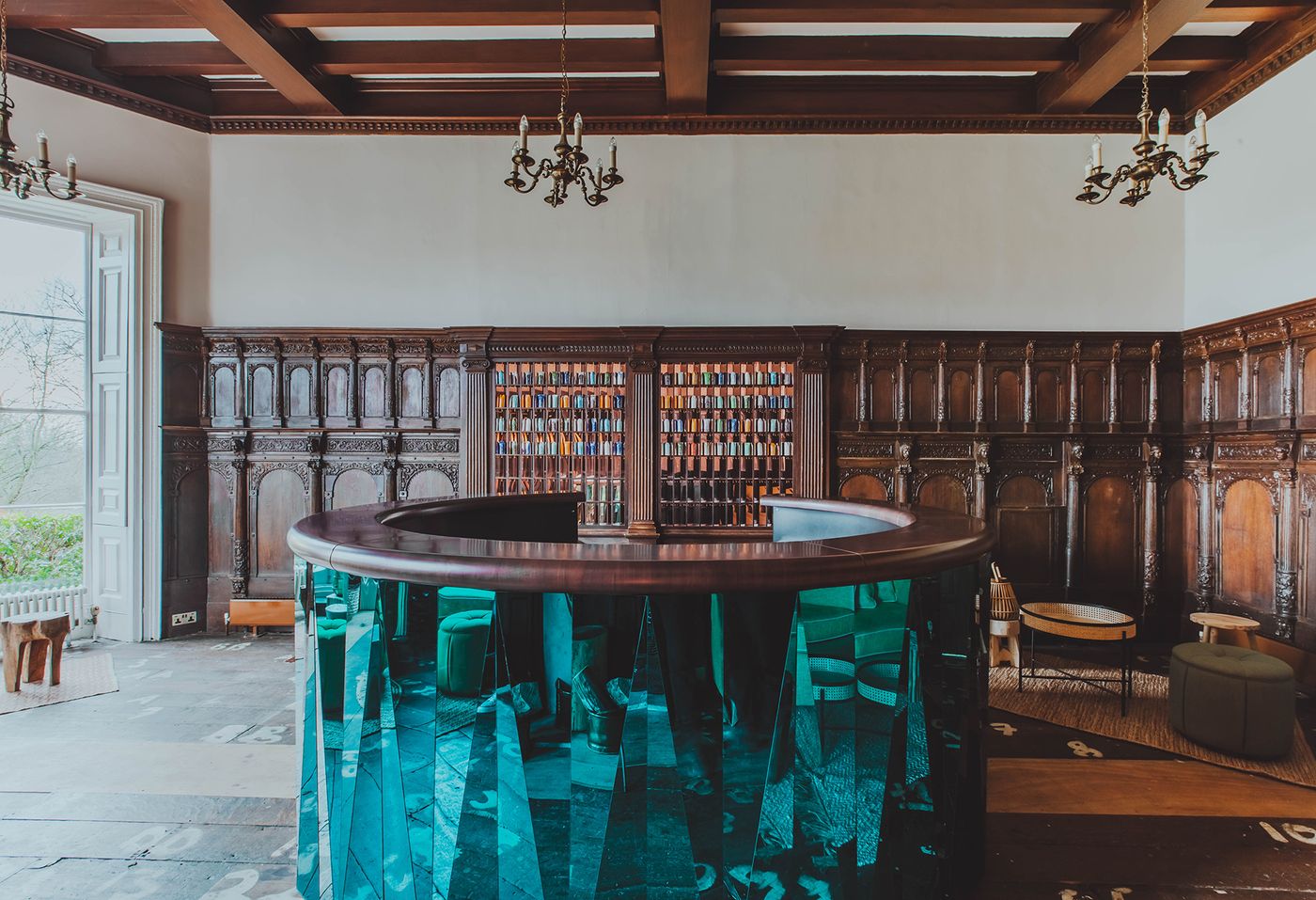
Reception. Photo by Adam Firman.
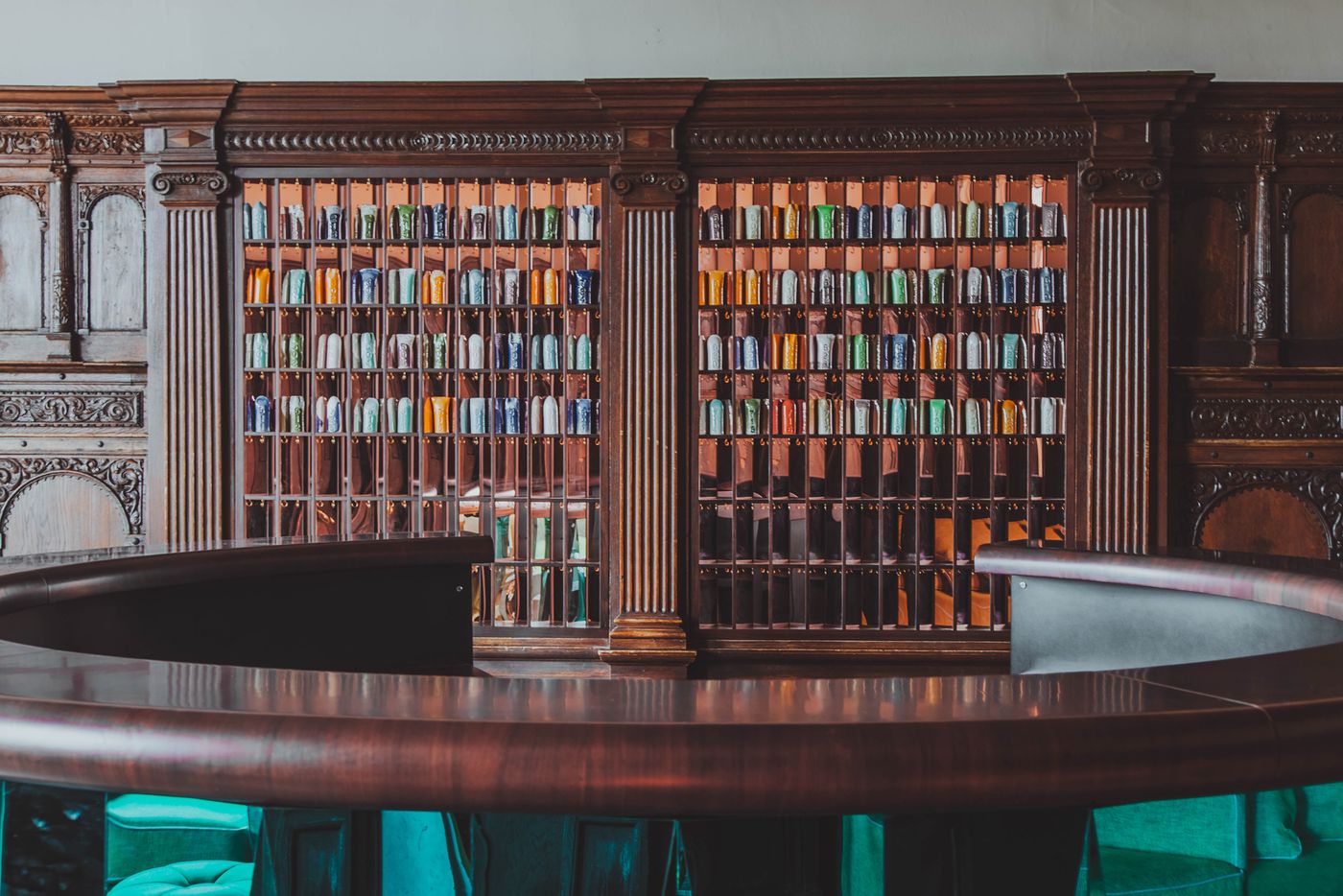
Reception. Photo by Adam Firman.
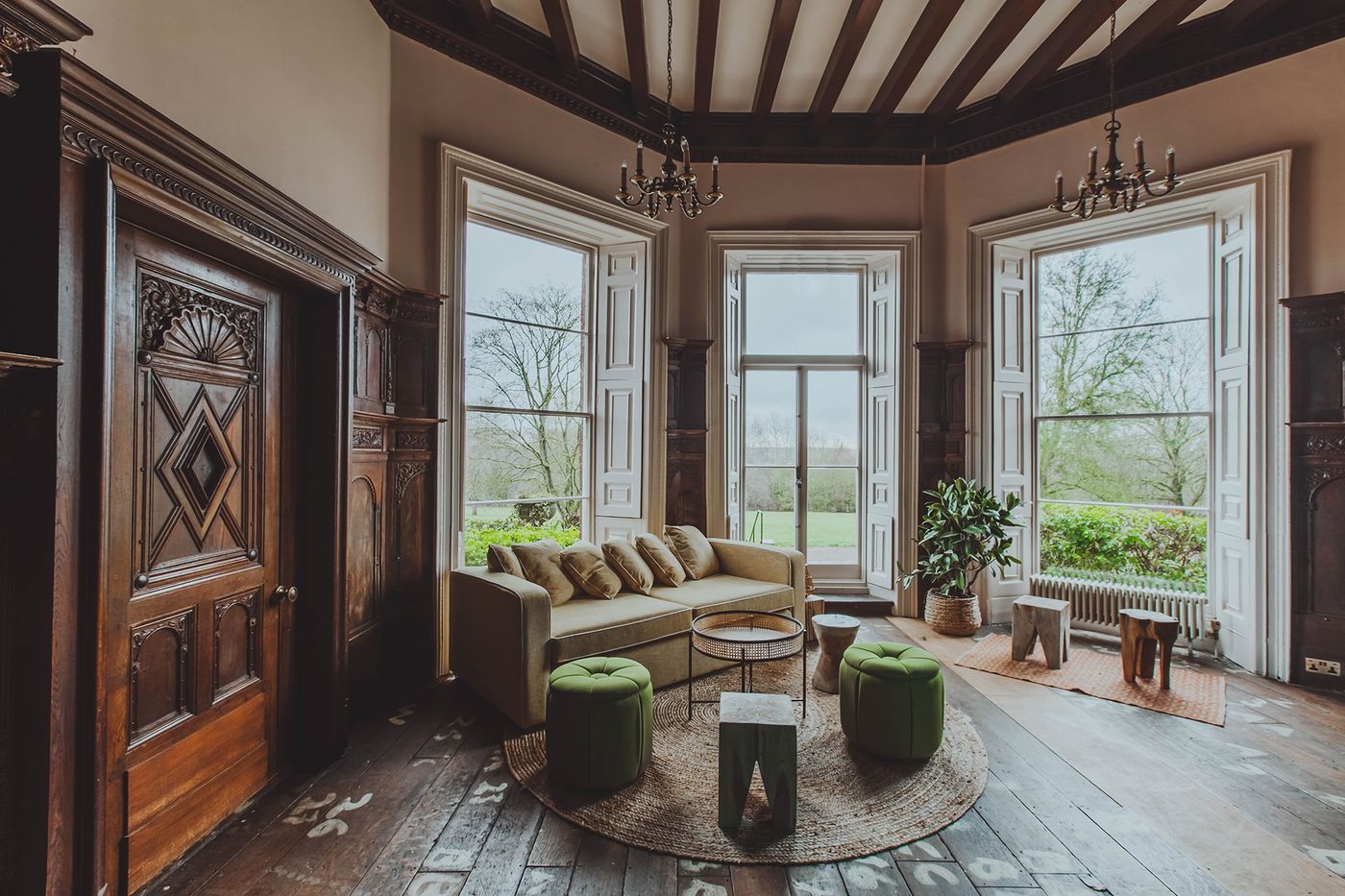
Reception. Photo by Adam Firman.
Taking over the former De Vere Theobalds Estate hotel, Red Deer’s renovation of the Grade II-listed building – a grand, Georgian Mansion, built in 1763 in a beautiful estate that dates back to the 15th century – is underpinned by an almost archaeological reverence. Intervening only where it mattered, the architects set out to reuse and repair the existing building fabric and to strip back extraneous elements and unnecessary clutter in order to create thoughtful spaces. “We always try to take a light touch on the existing features and celebrate the existing building” as Ciarán O’Brien, co-founder of Red Deer explains. This approach was inspired by the resourcefulness of the past, where old estates used to manage their resources and land holistically, but it also speaks to the architects’ sustainable vision. Minimising waste, reducing emissions and using environmentally conscious, recycled and non-precious materials are key commitments for the practice.
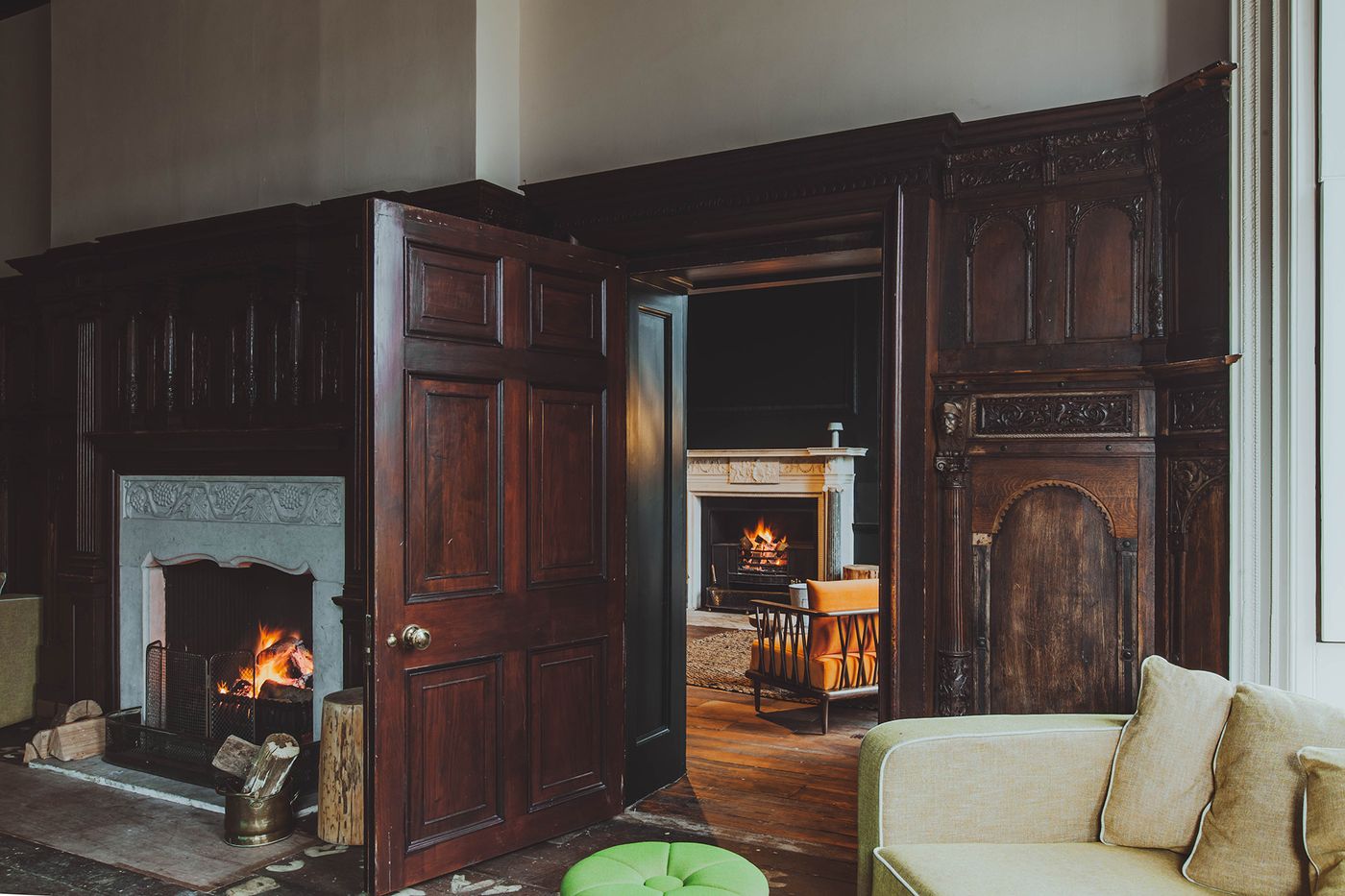
Reception with views of the library. Photo by Adam Firman.
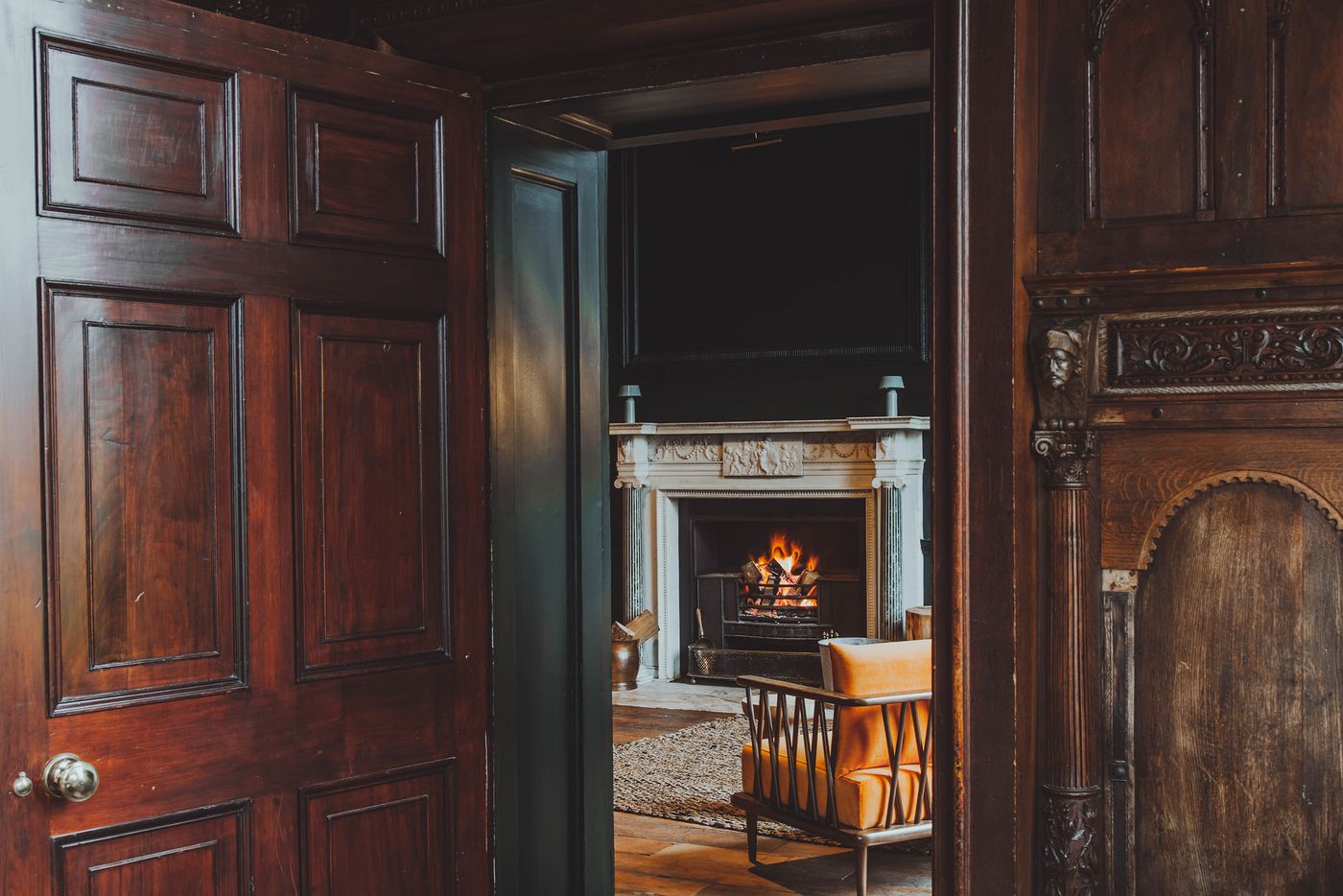
Photo by Adam Firman.
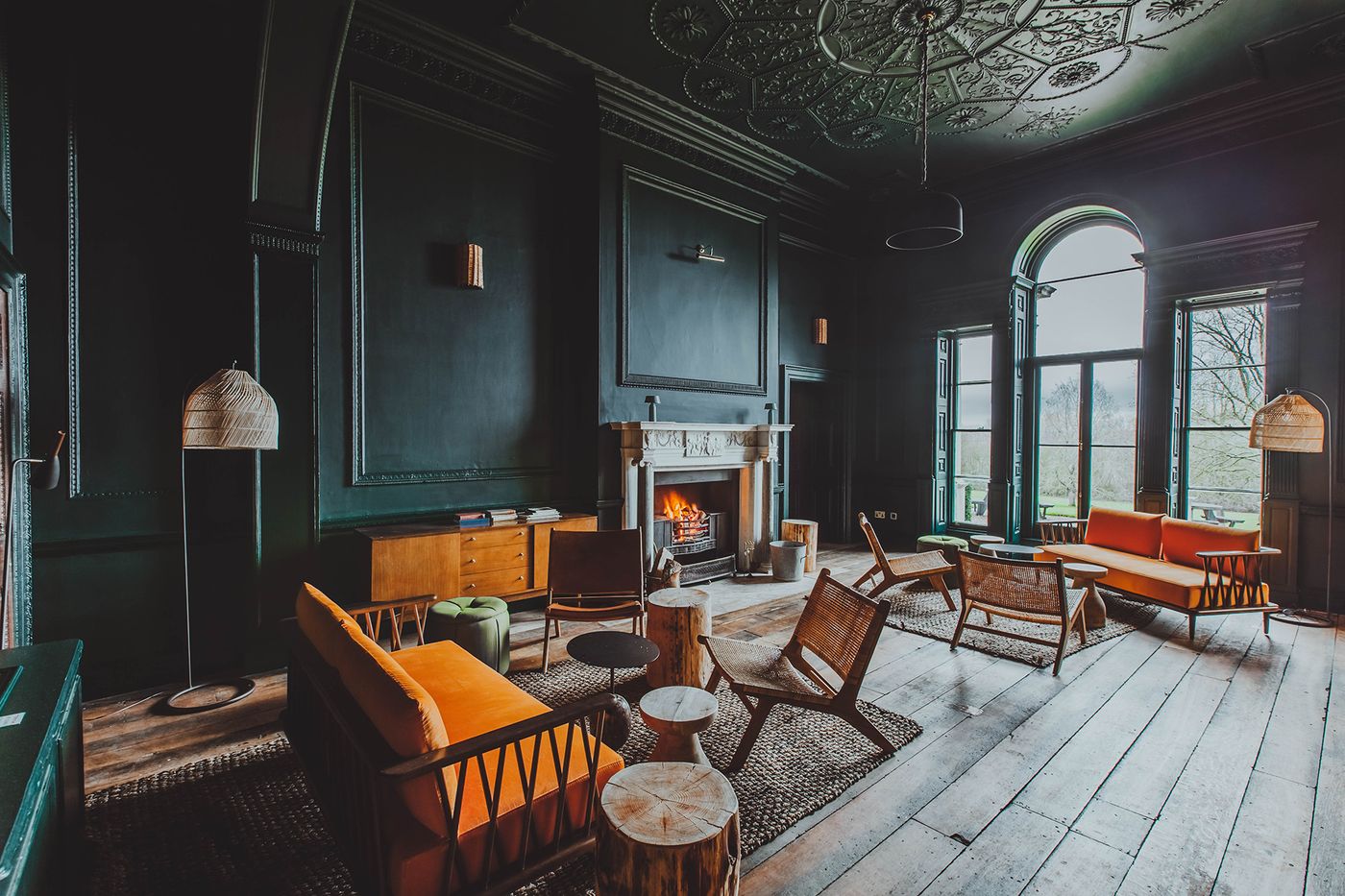
Library. Photo by Adam Firman.
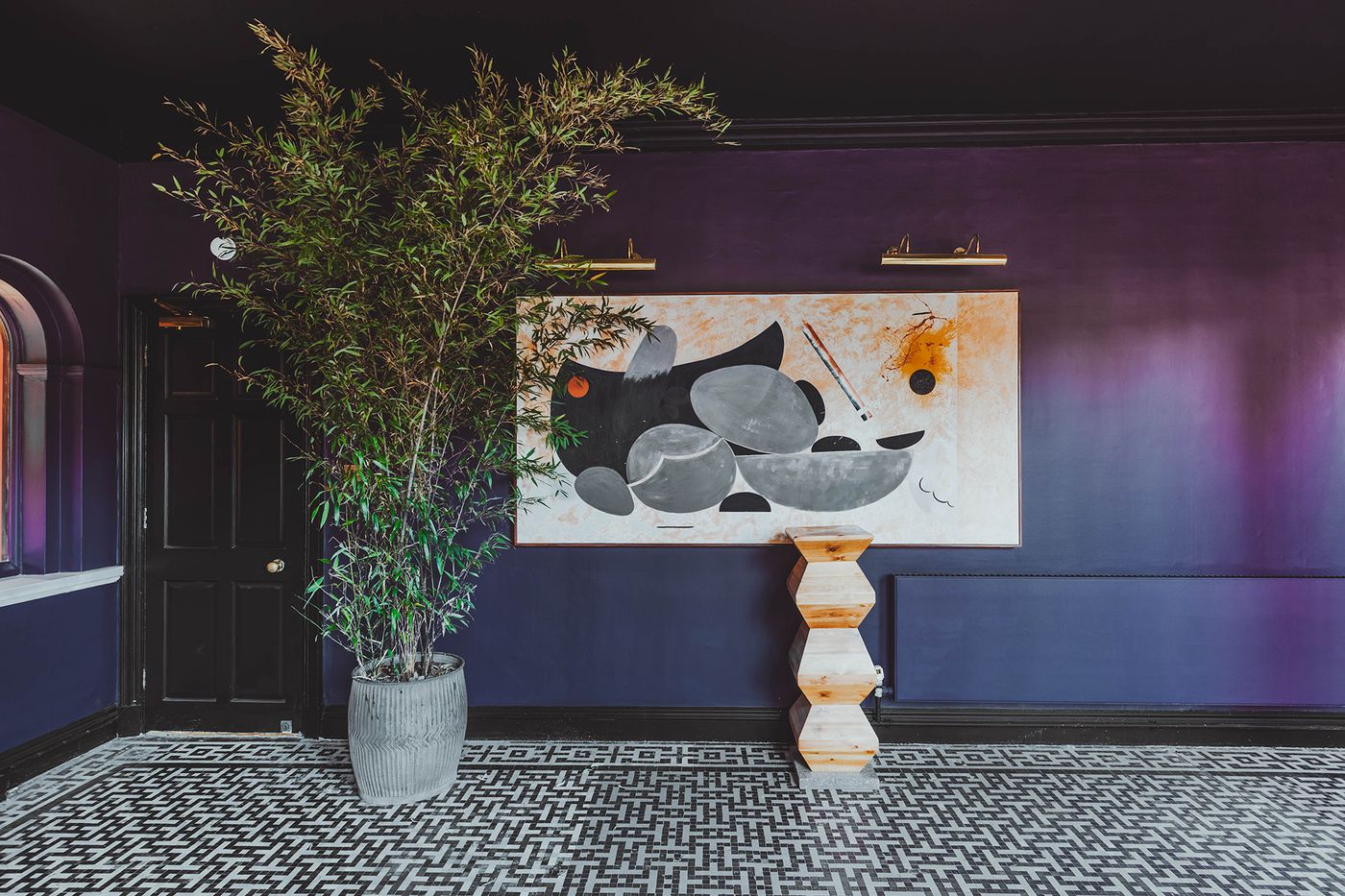
Photo by Adam Firman.
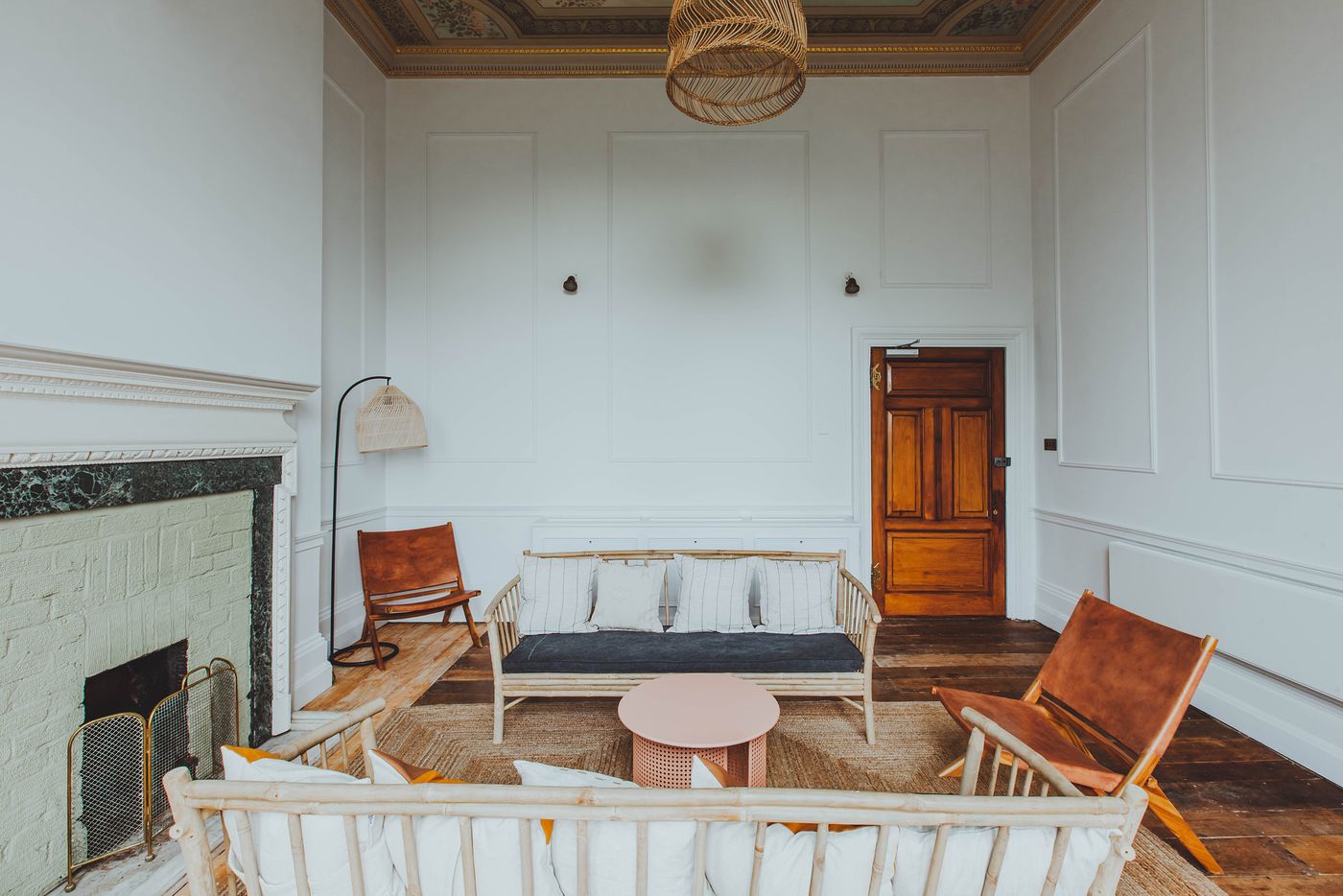
Photo by Adam Firman.

Photo by Adam Firman.
For this project, sustainability considerations have been fittingly combined with the Japanese craft of kintsugi, where broken pottery is visibly repaired using gold-dusted lacquer, and the related Buddhist notion of Mottainai, a Japanese term that conveys a sense of regret over waste. In practice, what this creative confluence of ideas entailed in O’Brien’s words was “treating both the breakage and repair [of the building] as part of the history of the place, rather than something to disguise”.
A prime example of Red Deer’s kintsugi-inspired, sustainability-driven approach is the treatment of the floorboards in the previously carpeted reception area. Numbered in white paint during a previous renovation, the exposed floorboards where left intact, their numerical markings poetically turned into a decorative feature. Similar markings and scars are left visible throughout the mansion as reminders of the passage of time while meticulously refurbished elements such as decorative mouldings and boiserie panels celebrate the mansion’s architectural heritage.
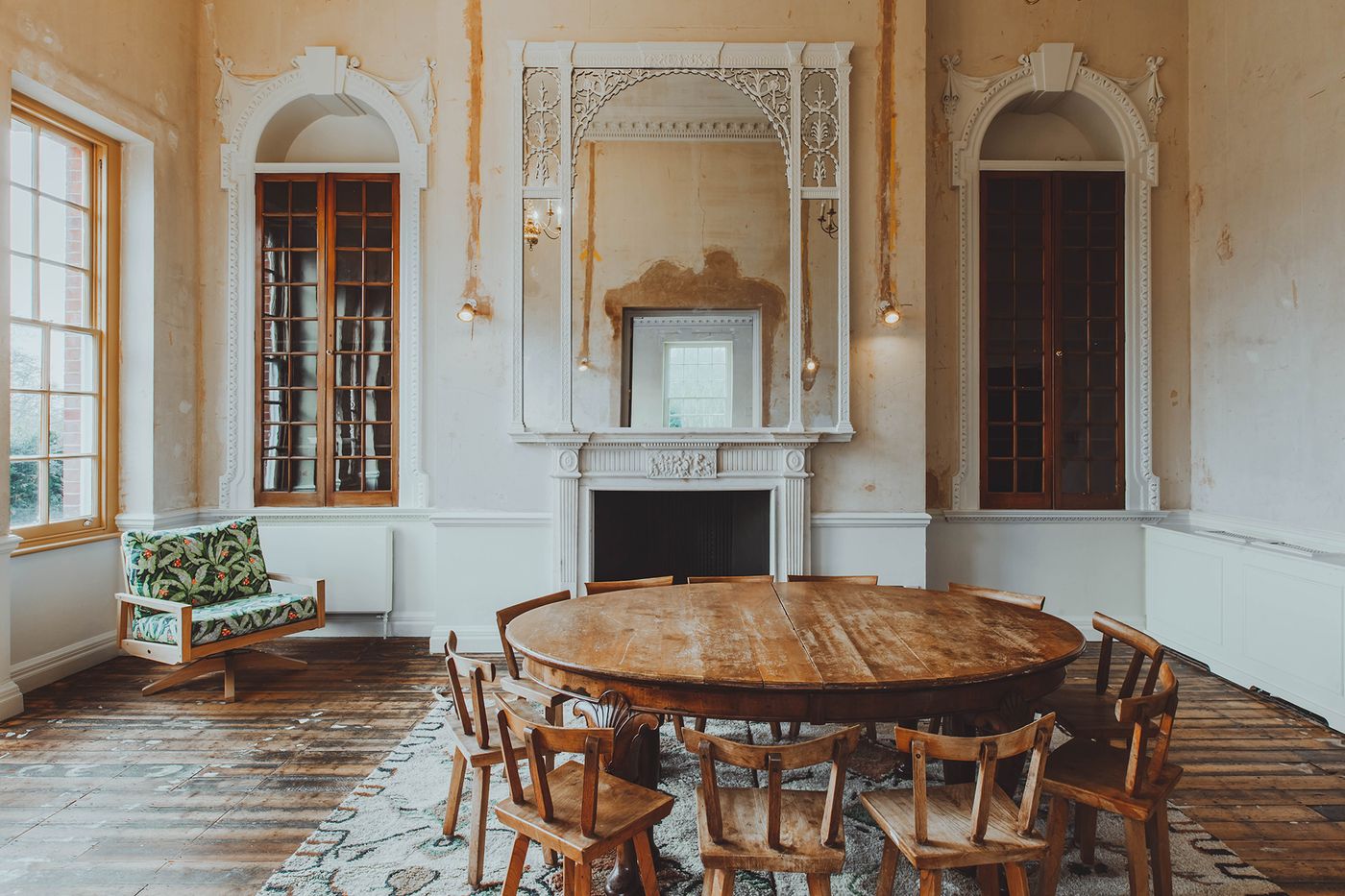
"Jones" multi-purpose space. Photo by Adam Firman.
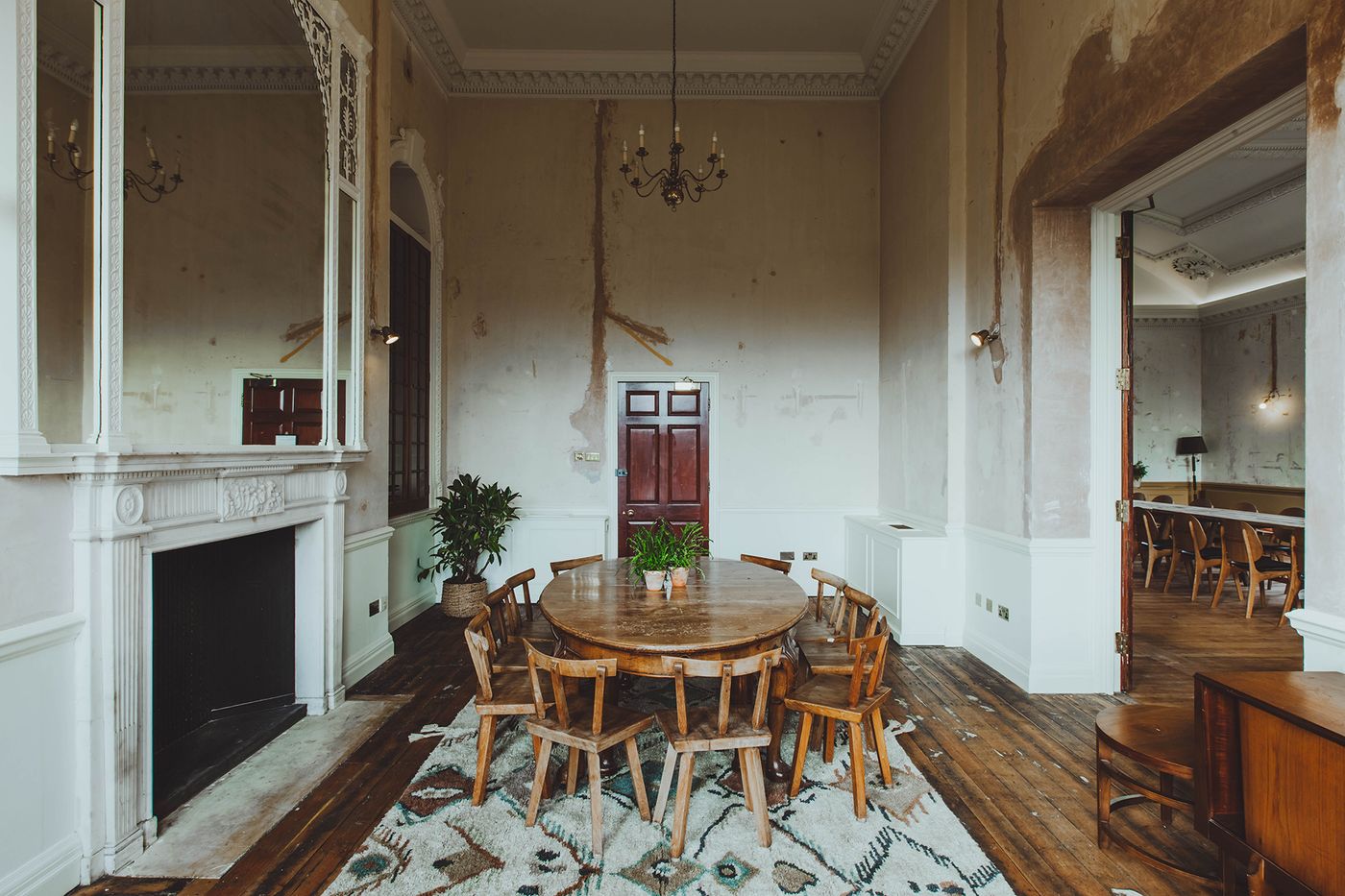
"Jones" multi-purpose space. Photo by Adam Firman.
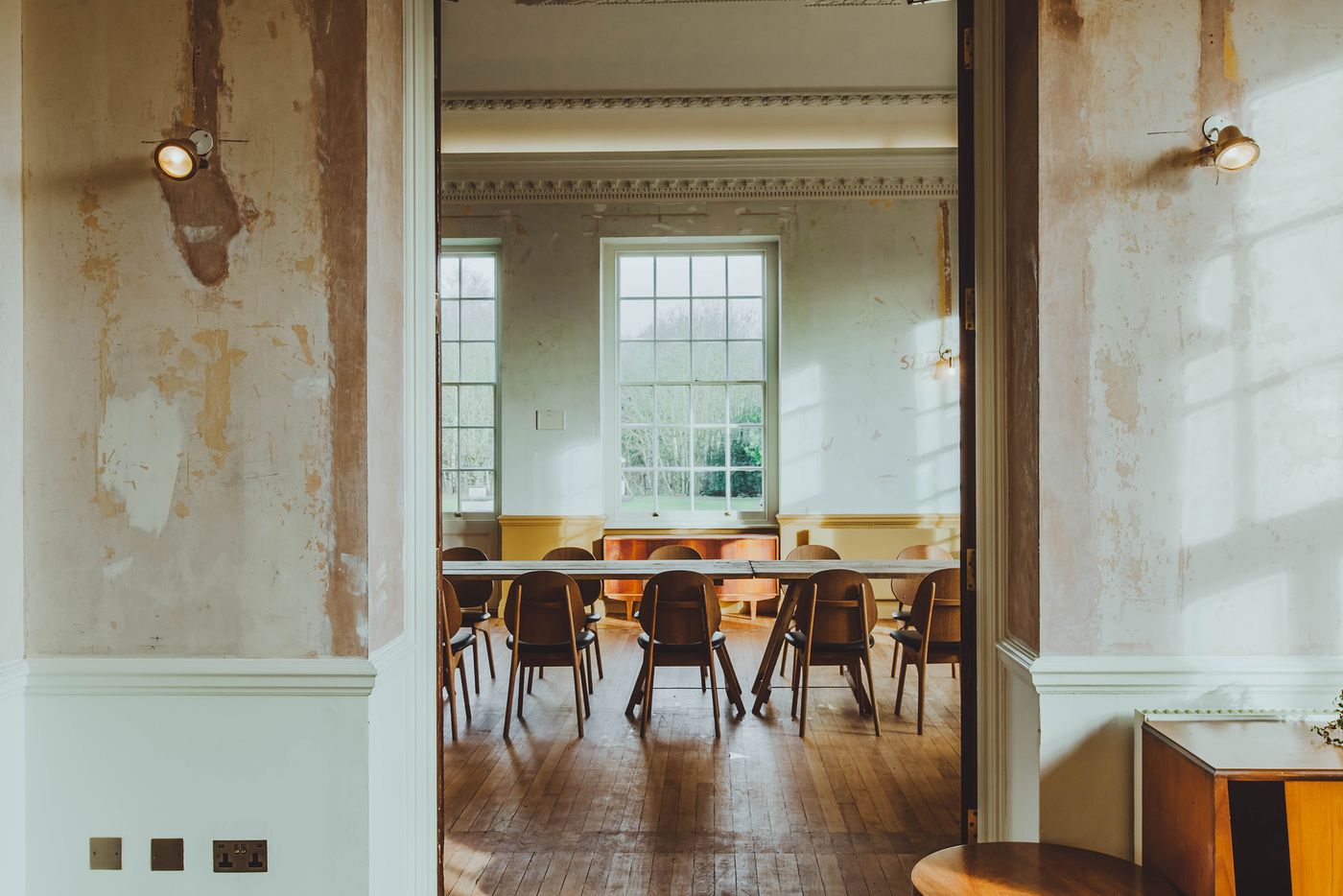
Photo by Adam Firman.
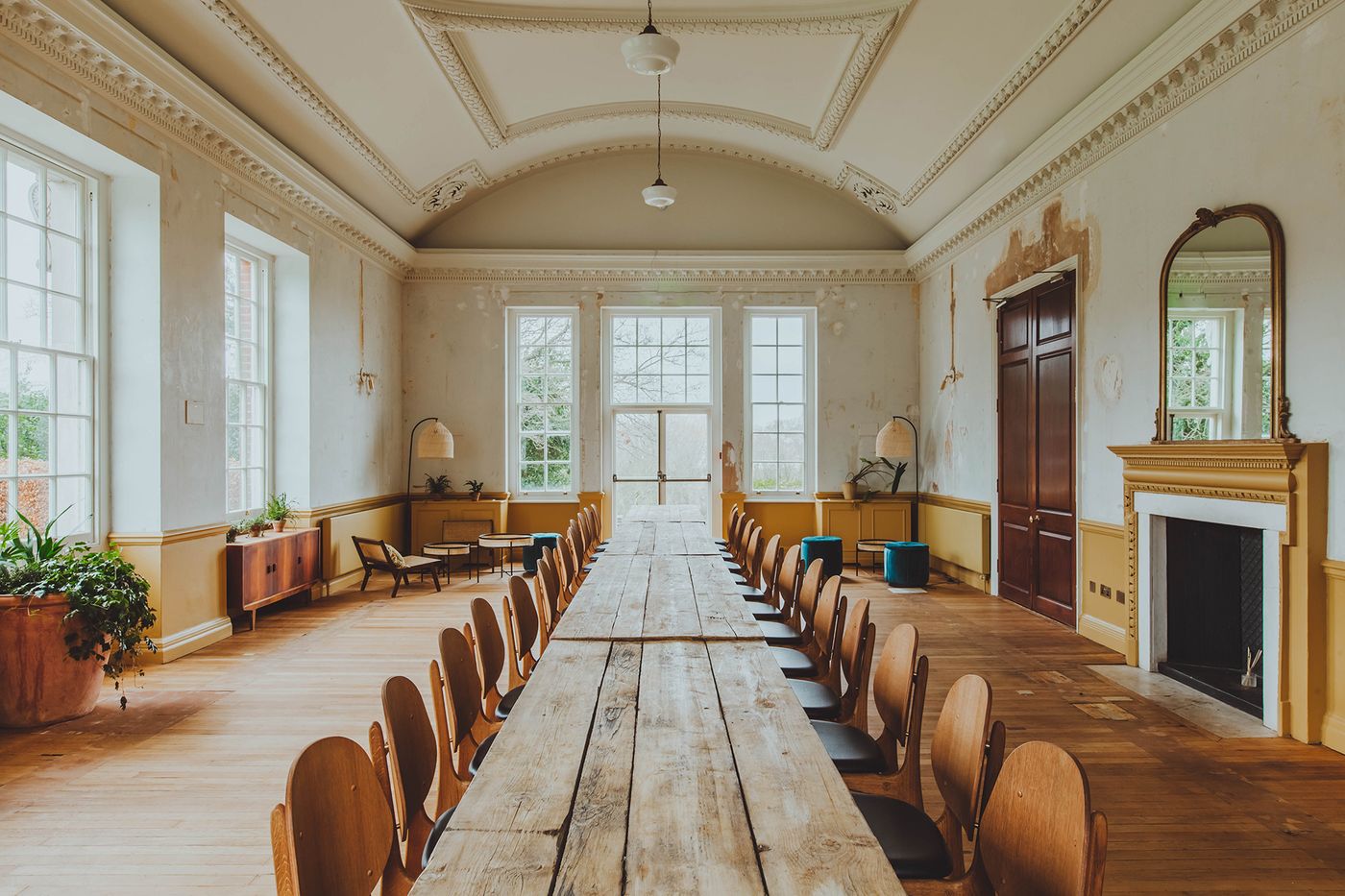
"Lang" multi-purpose space. Photo by Adam Firman.
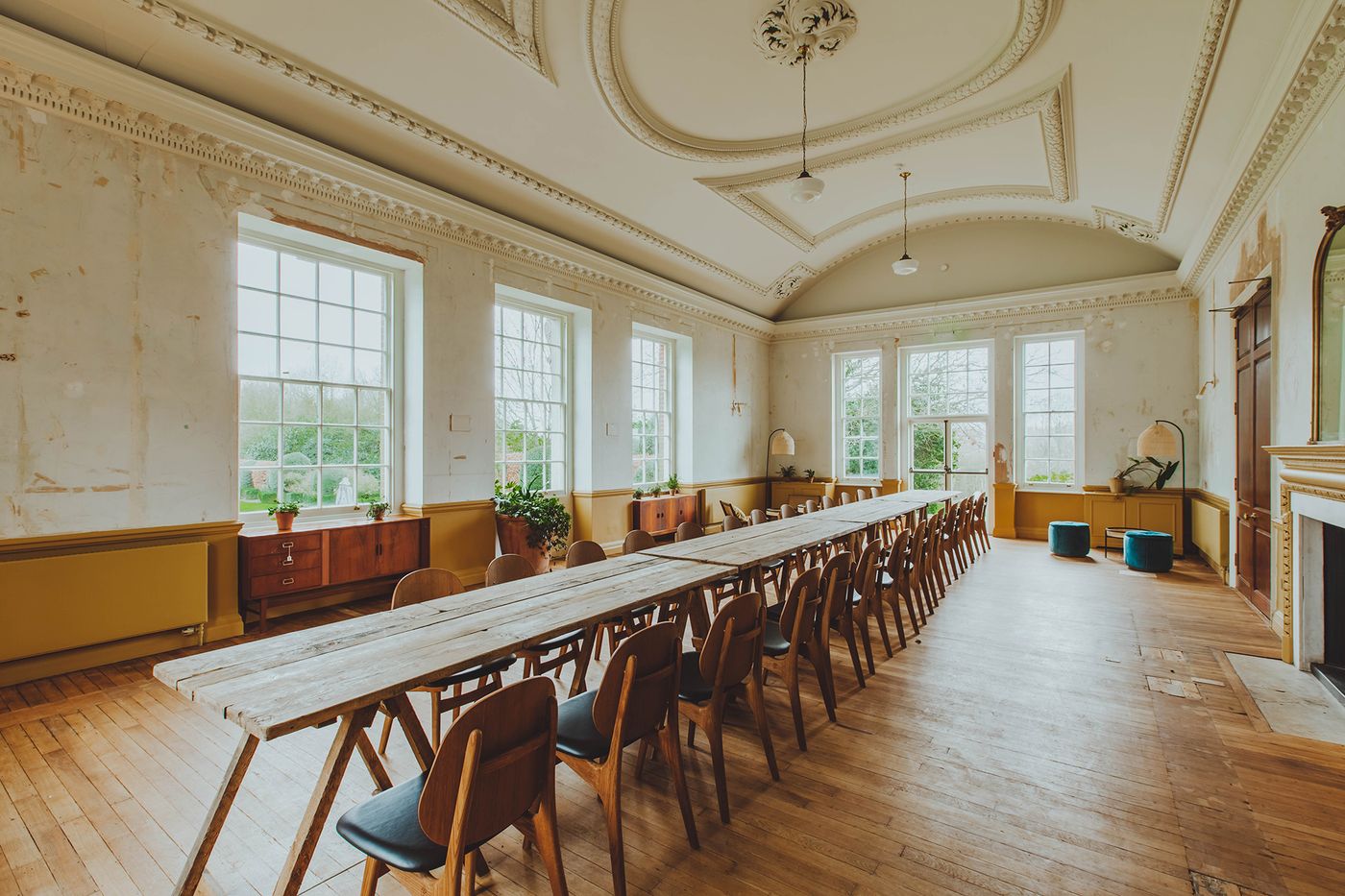
"Lang" multi-purpose space. Photo by Adam Firman.
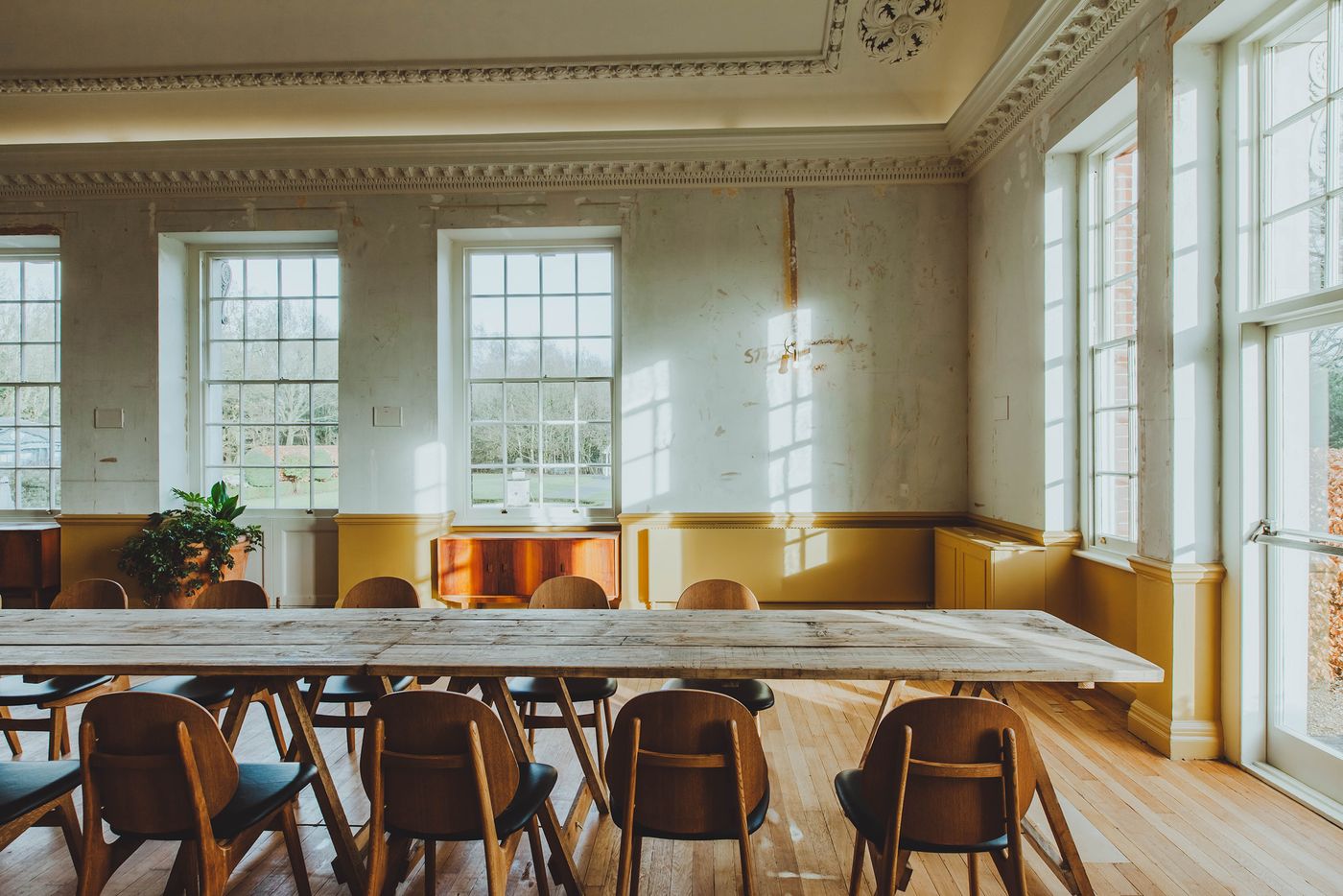
"Lang" multi-purpose space. Photo by Adam Firman.
Far from evoking a museum-like sensibility though, the renovated mansion feels and looks fresh not least because of Red Deer’s collaborative ethos which had local artists and craftspeople bought on-board to work on the interiors. The most prominent piece that came out of this process is undoubtedly a bespoke Valet Stand manufactured by London-based furniture makers Jan Hendzel Studio, whose playful design incorporates recycled plastic orbs by sustainable material designer Charlotte Kidger, textured vases by ceramicist Emma Louise Payne and hand-beaten patinated copper bowls by metal smith Lucie Naujalis. Combined with the grained ash, spalted sycamore and carved black cork, the 120 valet stands that the Studio crafted are a paradigm of diversity of materials and textures, as well as modularity: the ceramic and copper parts can be interchanged or replaced over time. Furthermore, with no piece being the same, the endeavour also celebrates character over uniformity and reflects the ethos of the renovation as do the Valet Stand’s attention to detail and meticulous craftsmanship.
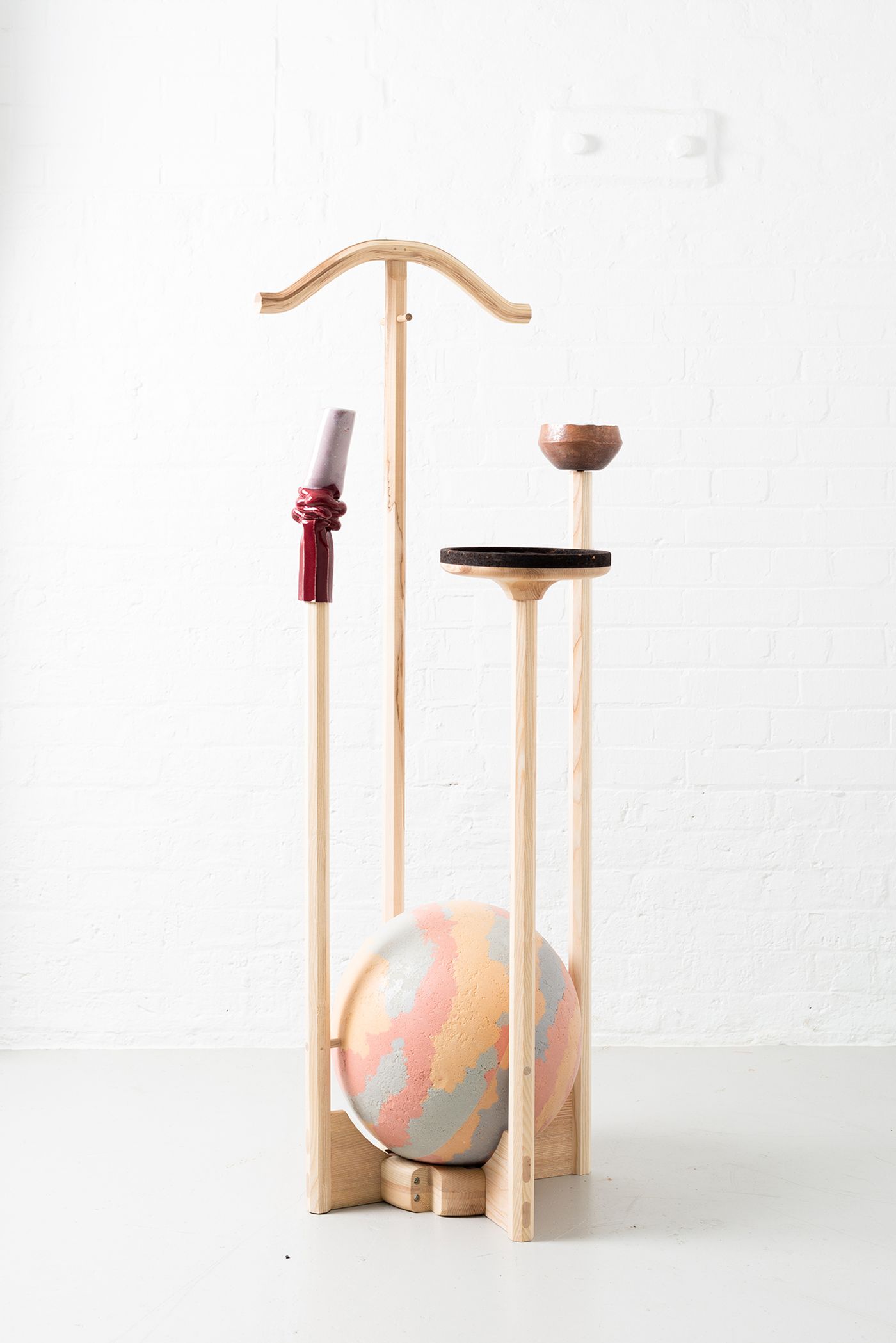
Valet Stand by Jan Hendzel Studio. Photo by Fergus Coyle.
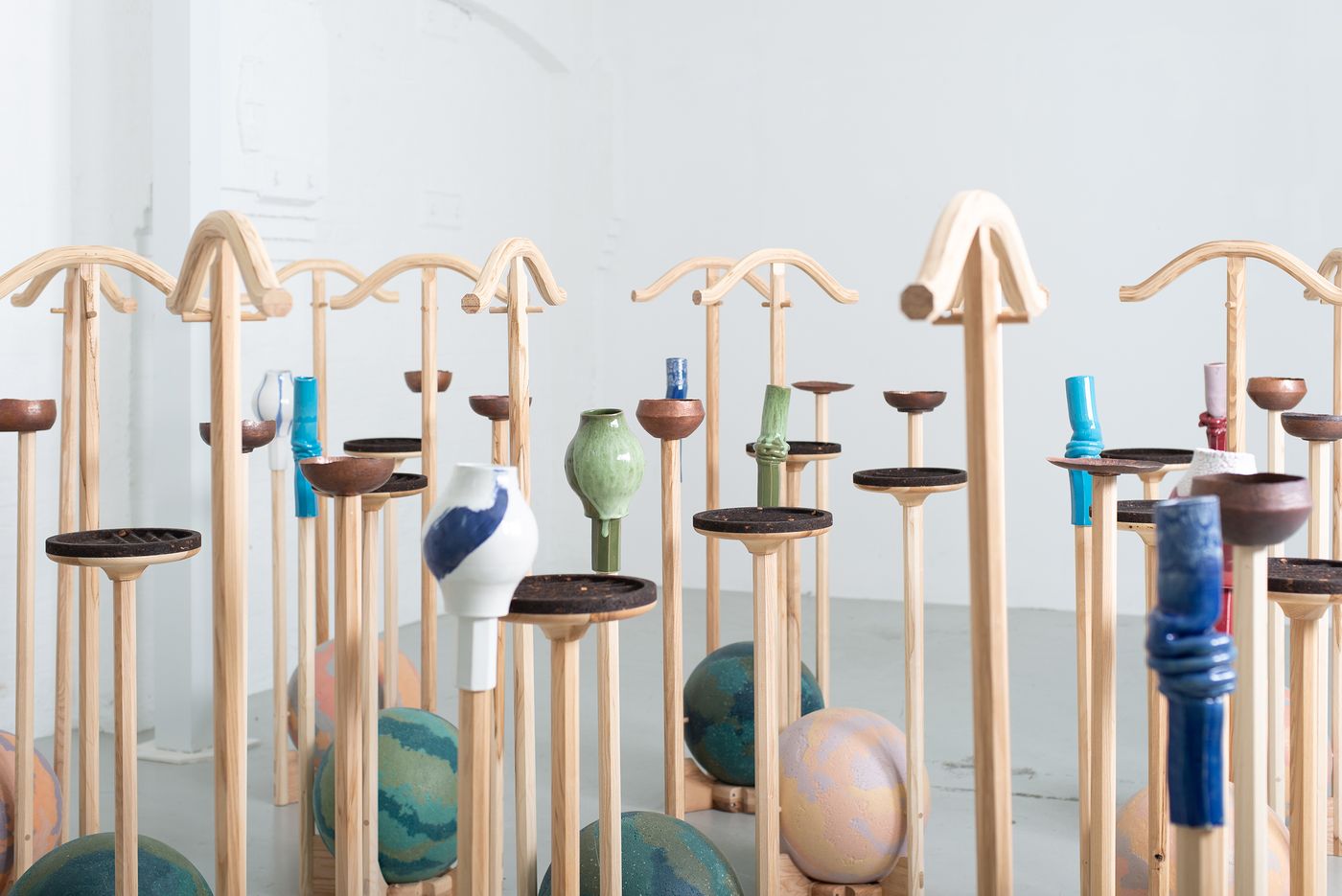
Valet Stand by Jan Hendzel Studio. Photo by Fergus Coyle.
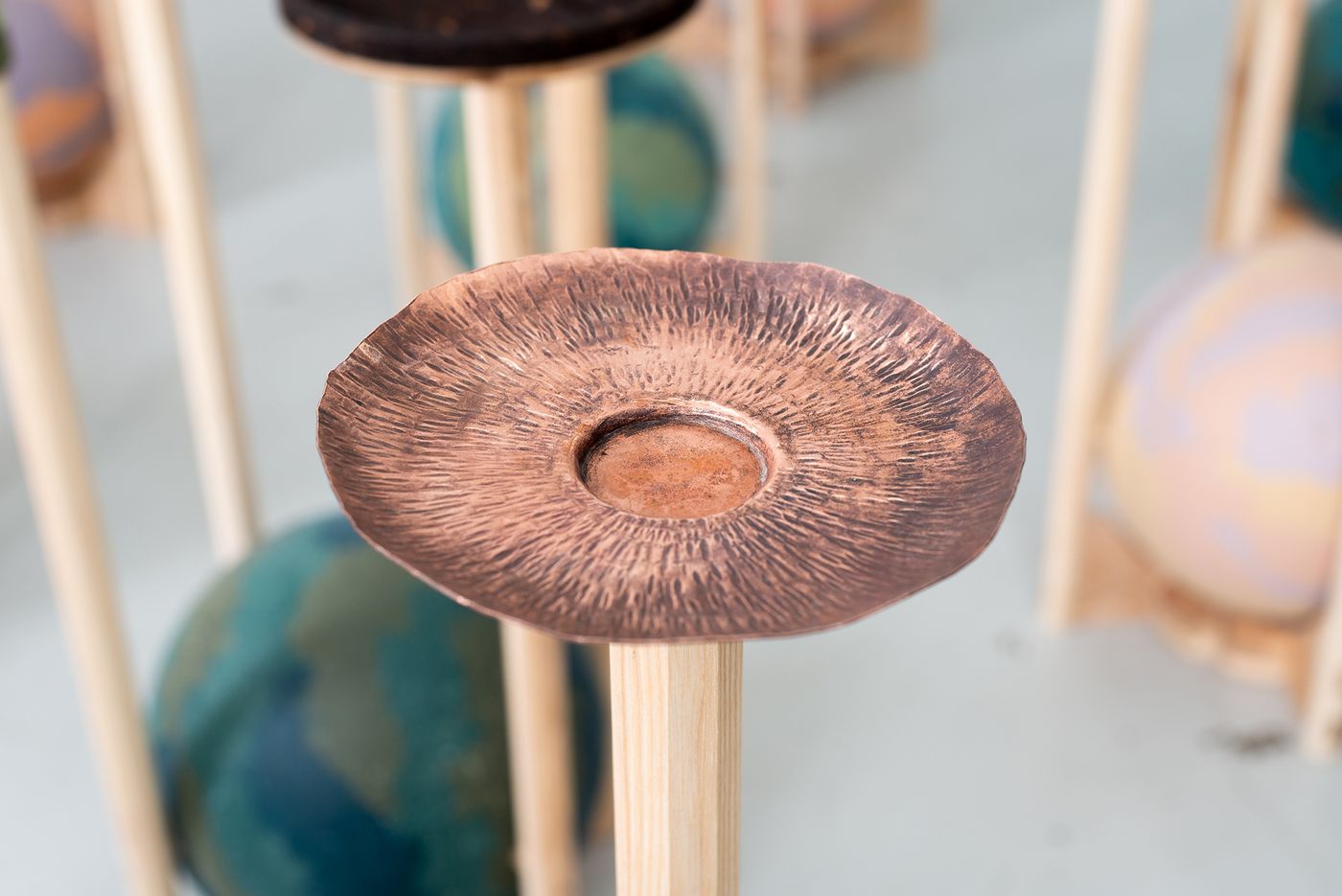
Valet Stand by Jan Hendzel Studio, copper plate by Lucie Naujalis. Photo by Fergus Coyle.
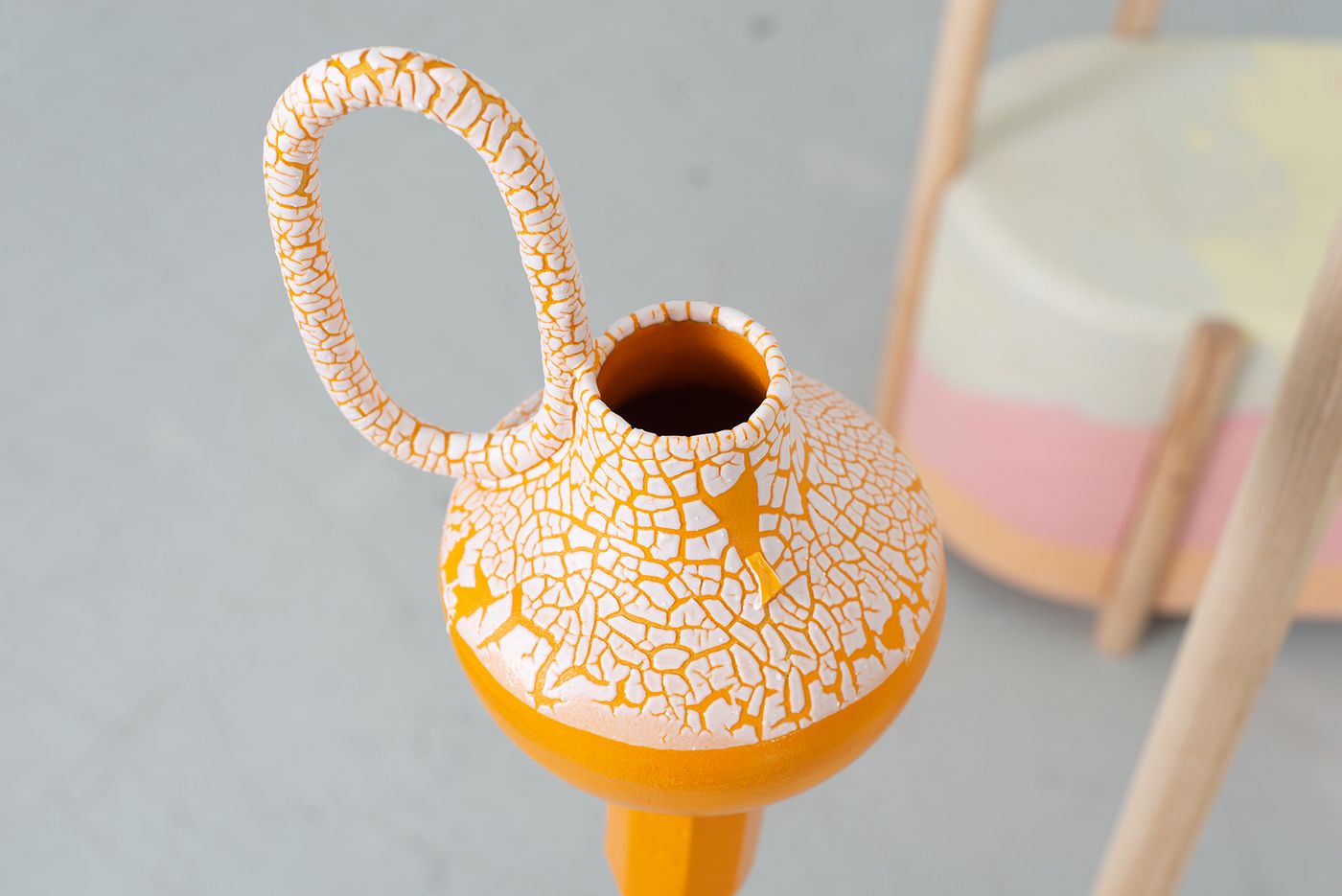
Valet Stand by Jan Hendzel Studio, ceramics by Emma Louise. Photo by Fergus Coyle.
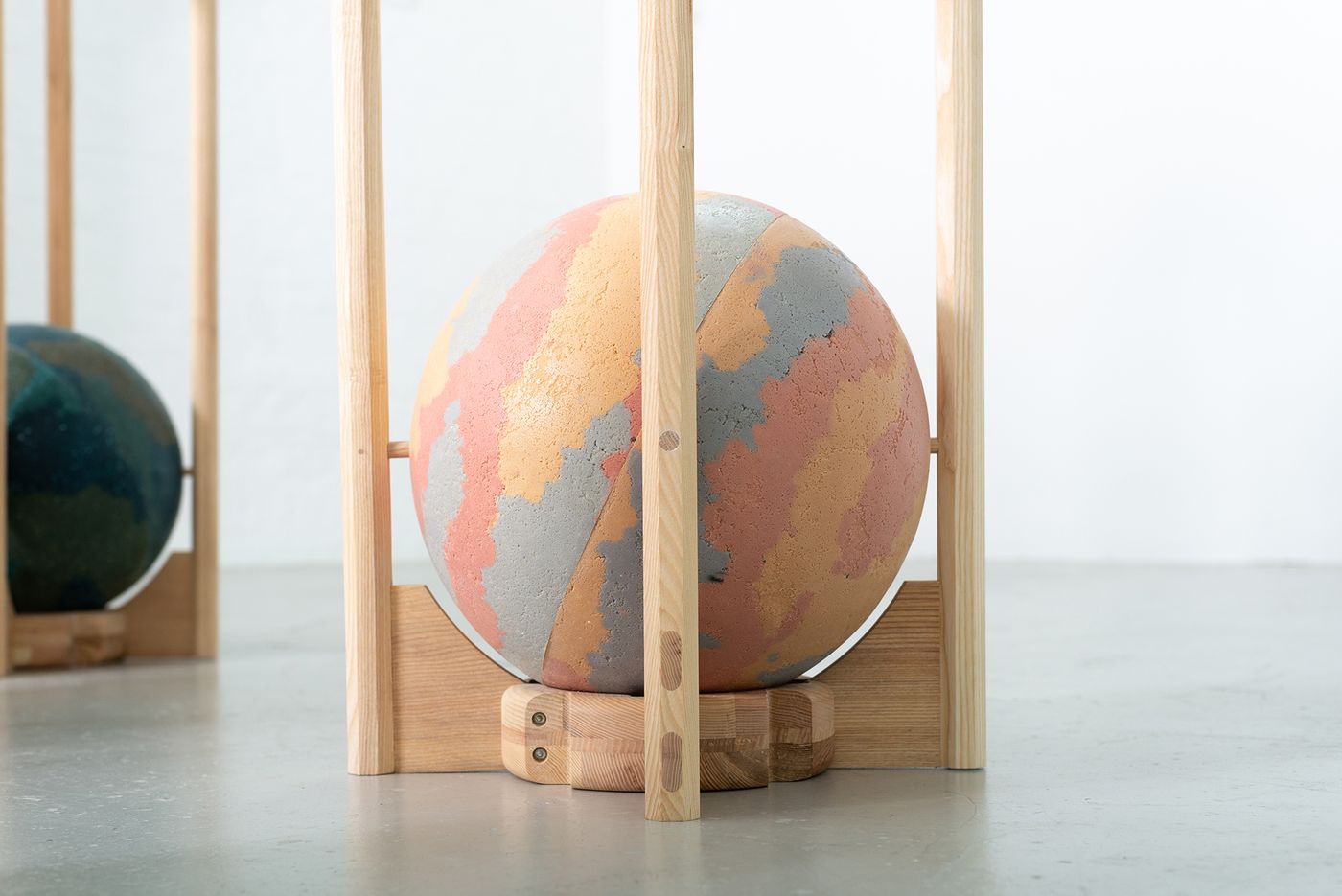
Valet Stand by Jan Hendzel Studio, recycled plastic orbs by Charlotte Kidger. Photo by Fergus Coyle.
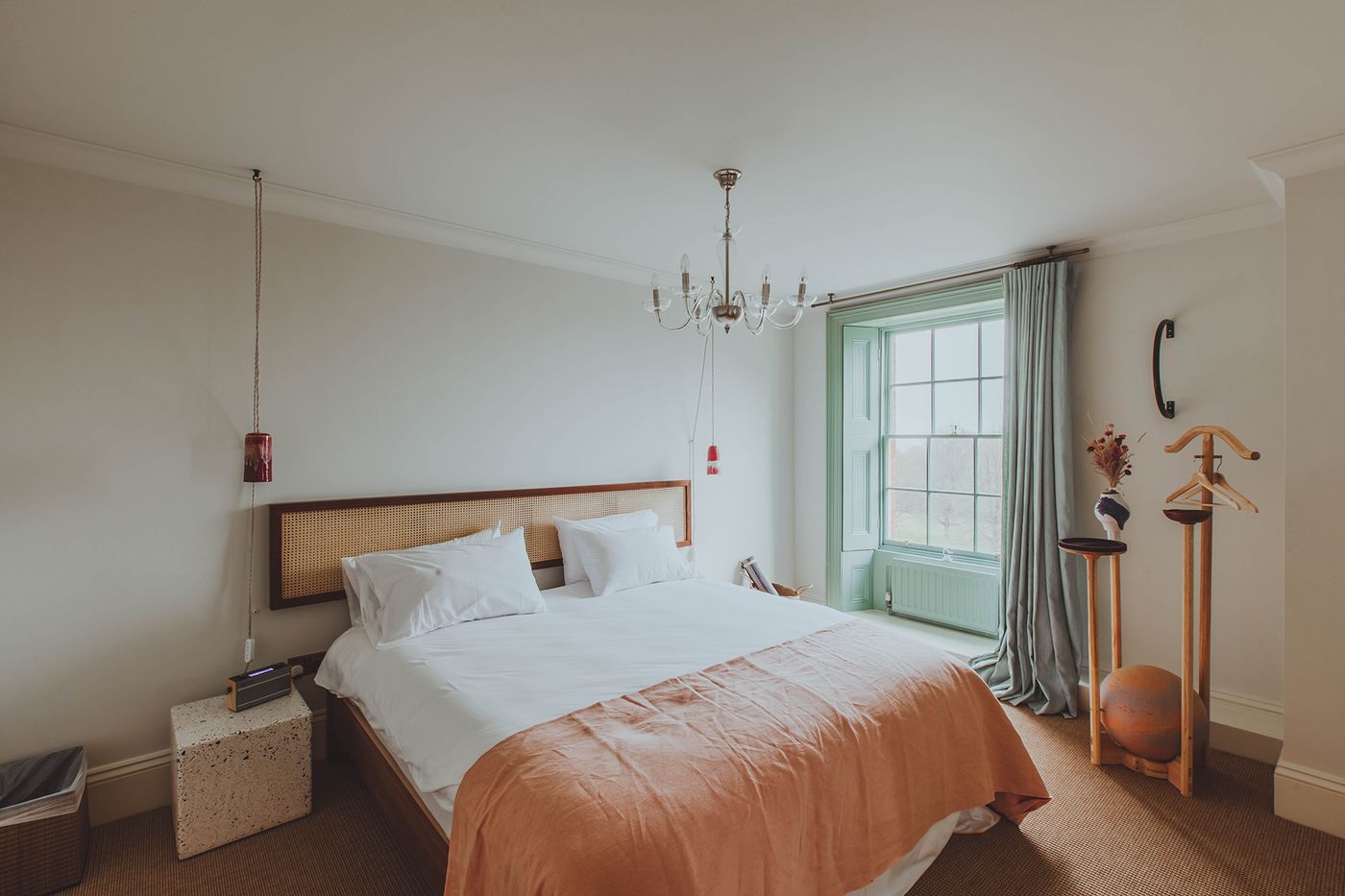
Guest room. Photo by Adam Firman.
For Birch and Red Deer, quality craftsmanship is not just a means for procuring beautiful objects though, along with sustainability and emotional connections, it’s a bedrock of a new kind of luxury hospitality that eschews indulgence and excess for meaningful experiences. This is why bedrooms have been stripped of attention-grabbing TVs and work-orientated desks and why guests are instead encouraged to participate in the wide range of activities that Birch offers, from weekly exercise, dance and meditation classes at the Wellness Centre, to shuffleboard, ping pong, and other games at the Arcade, and from throwing clay in the Pottery Studio, and kneading dough in the Interactive Bakery, to painting in the Art Studio, picking up an instrument in the Music Room, and watching a film in the 60-person Screening Room – leisurely furnished with vintage beach chairs.
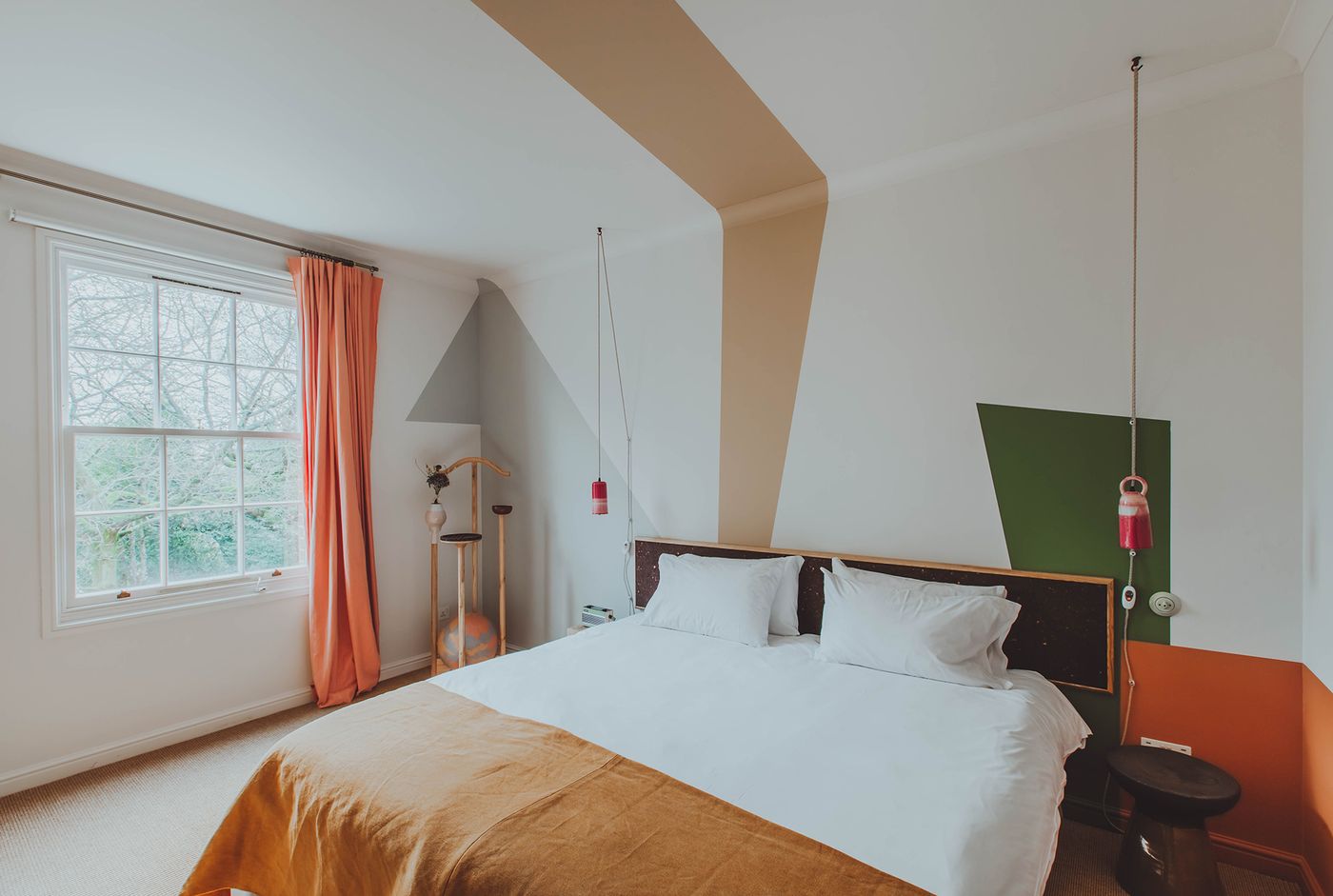
Guest room. Photo by Adam Firman.
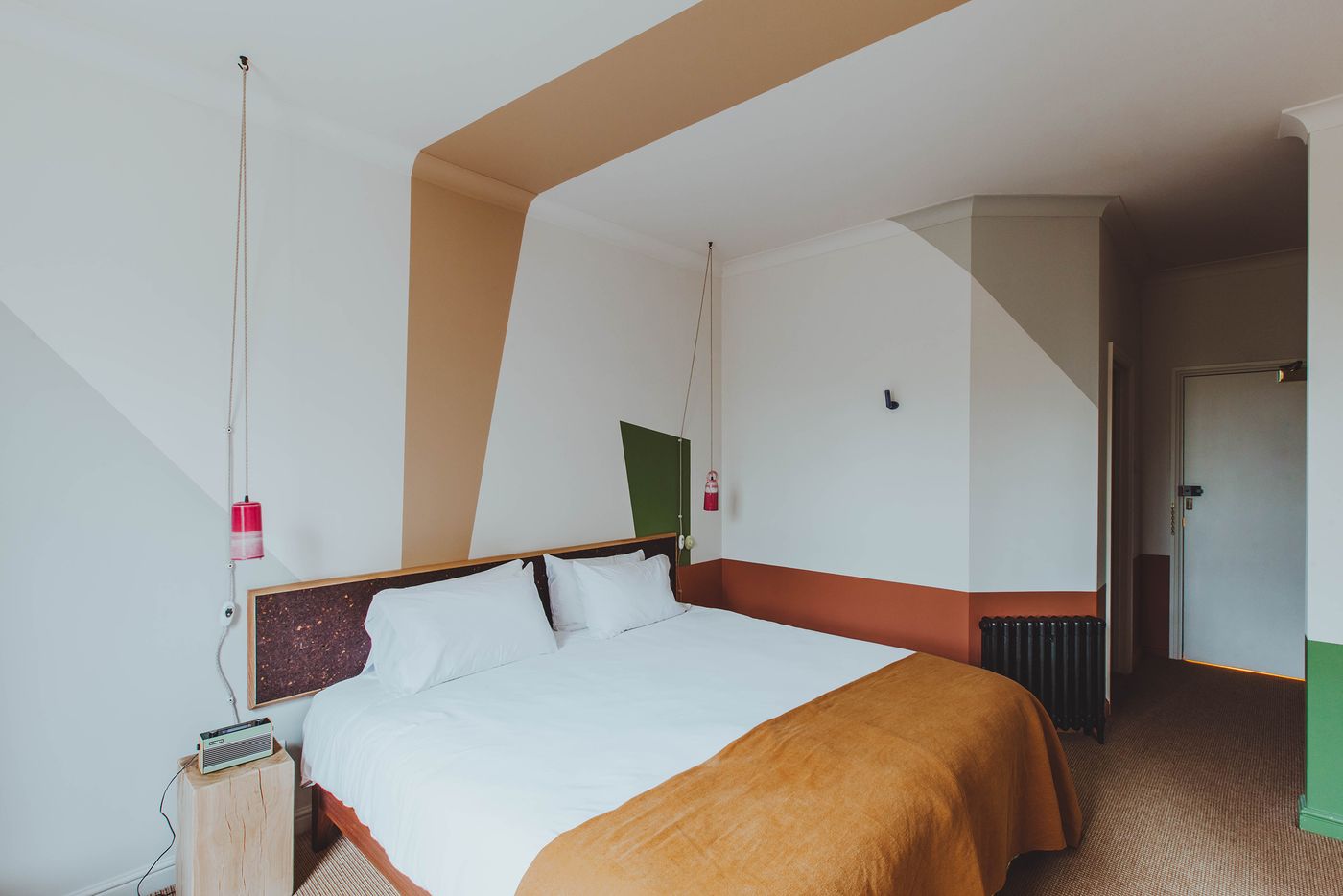
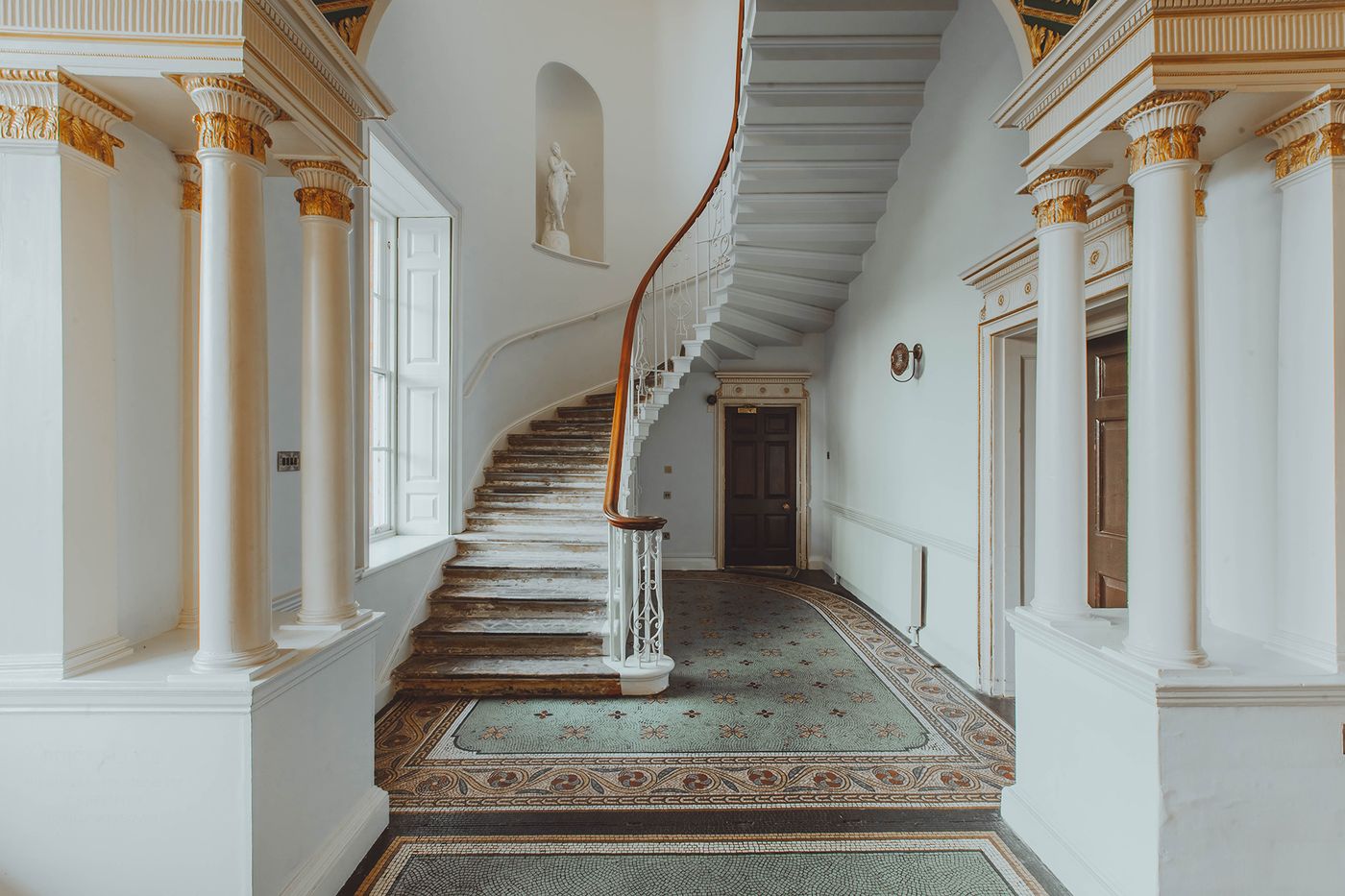
Photo by Adam Firman.

Screening Room. Photo by Adam Firman.
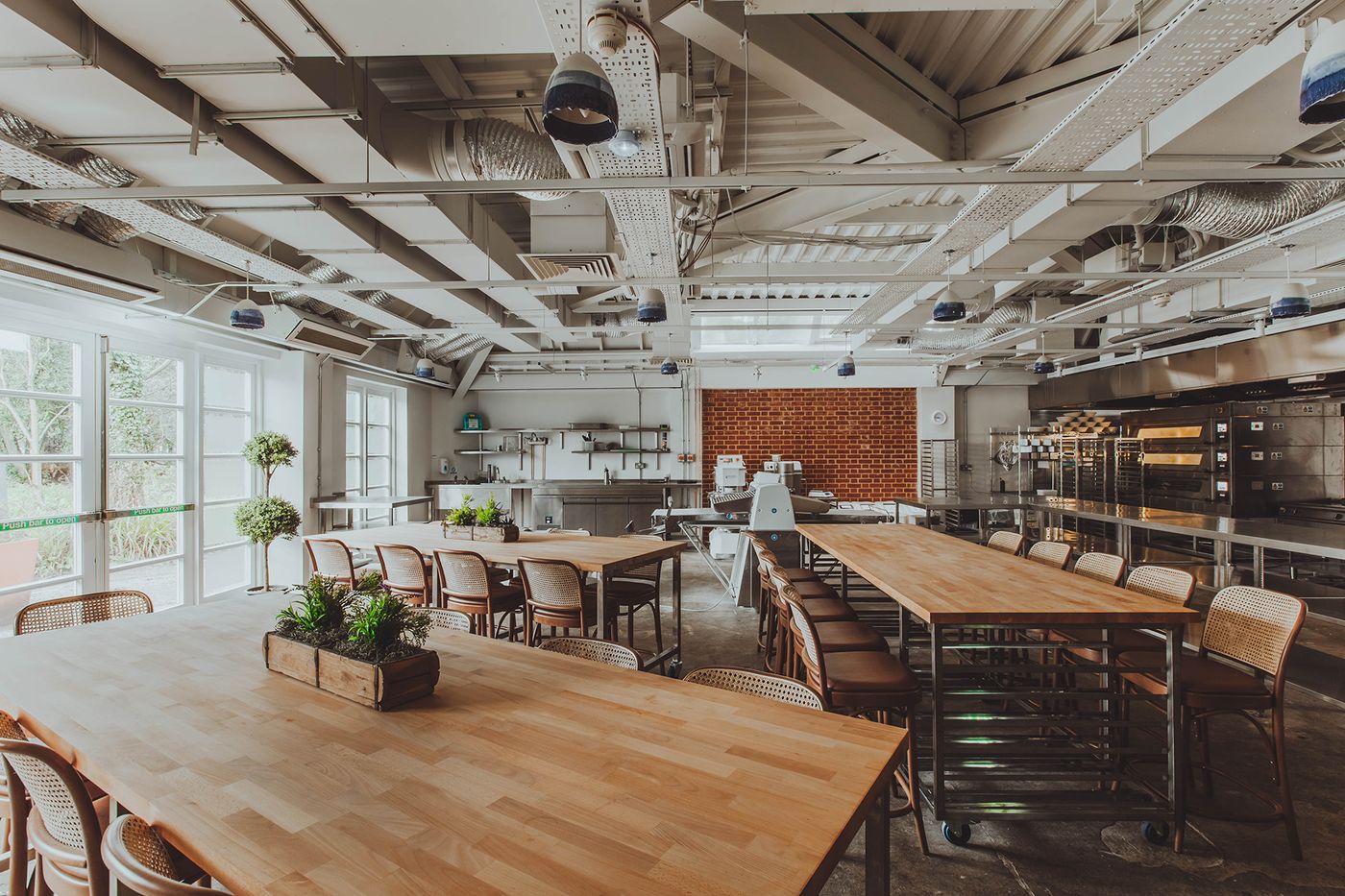
Interactive Bakery. Photo by Adam Firman.

Interactive Bakery. Photo by Adam Firman.
And that’s just the indoor activities! Outside, guests have the opportunity to explore the 55 acres estate, learn how to grow and compost their garden, get a closer look at beekeeping and forage with farmer Tom, while next year, they will also be able to take a swim in or lounge by the Lido outdoor pool which will not only be heated but also complemented by a BBQ and bar.
Talking about food and drink, “The Zebra Riding Club” celebrates open-flame cooking, and the all-day “Valeries” serves grilled meat and fish, and wood-fired pizzas – with both restaurants using ingredients grown on-site and produce made in-house – while the aforementioned Interactive Bakery is the place to enjoy freshly baked bread and pastries for breakfast. With a trio of bars, garden feasts, laid-back picnics, and fizzing drinks trolleys, guests are free to indulge their senses. This is after all one of the tenets of Birch, to give guests the opportunity to escape the dos and don'ts of daily life and “reconnect to the things that matter most: walking, talking, touching and tasting”, and although covid has placed some restrictions where “touching” is concerned, Birch more than makes up for it with its soulful hospitality, culinary unpretentiousness and celebration of craftsmanship.
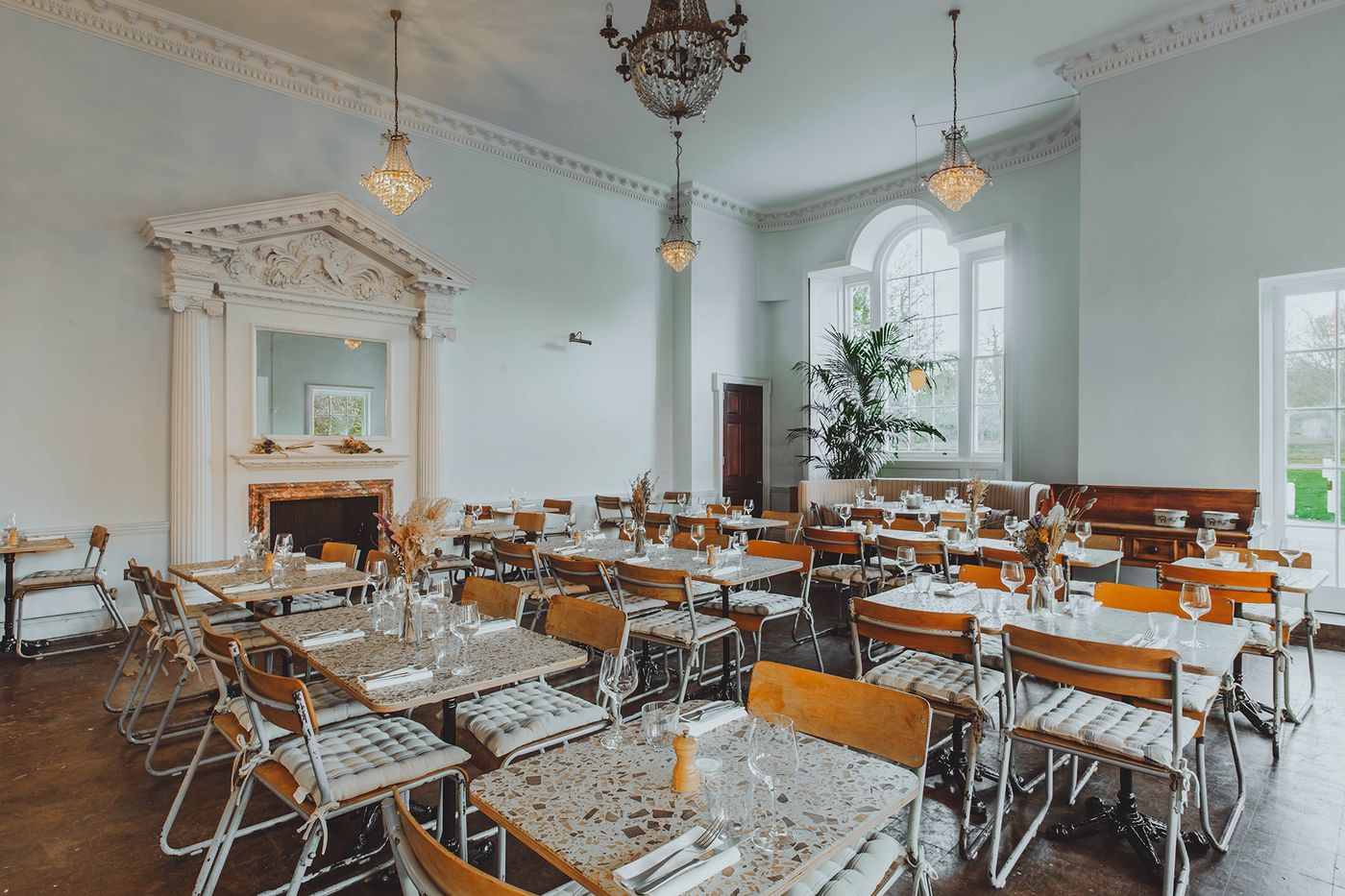
"Valeries" All-Day Restaurant. Photo by Adam Firman.

"Valeries" All-Day Restaurant. Photo by Adam Firman.
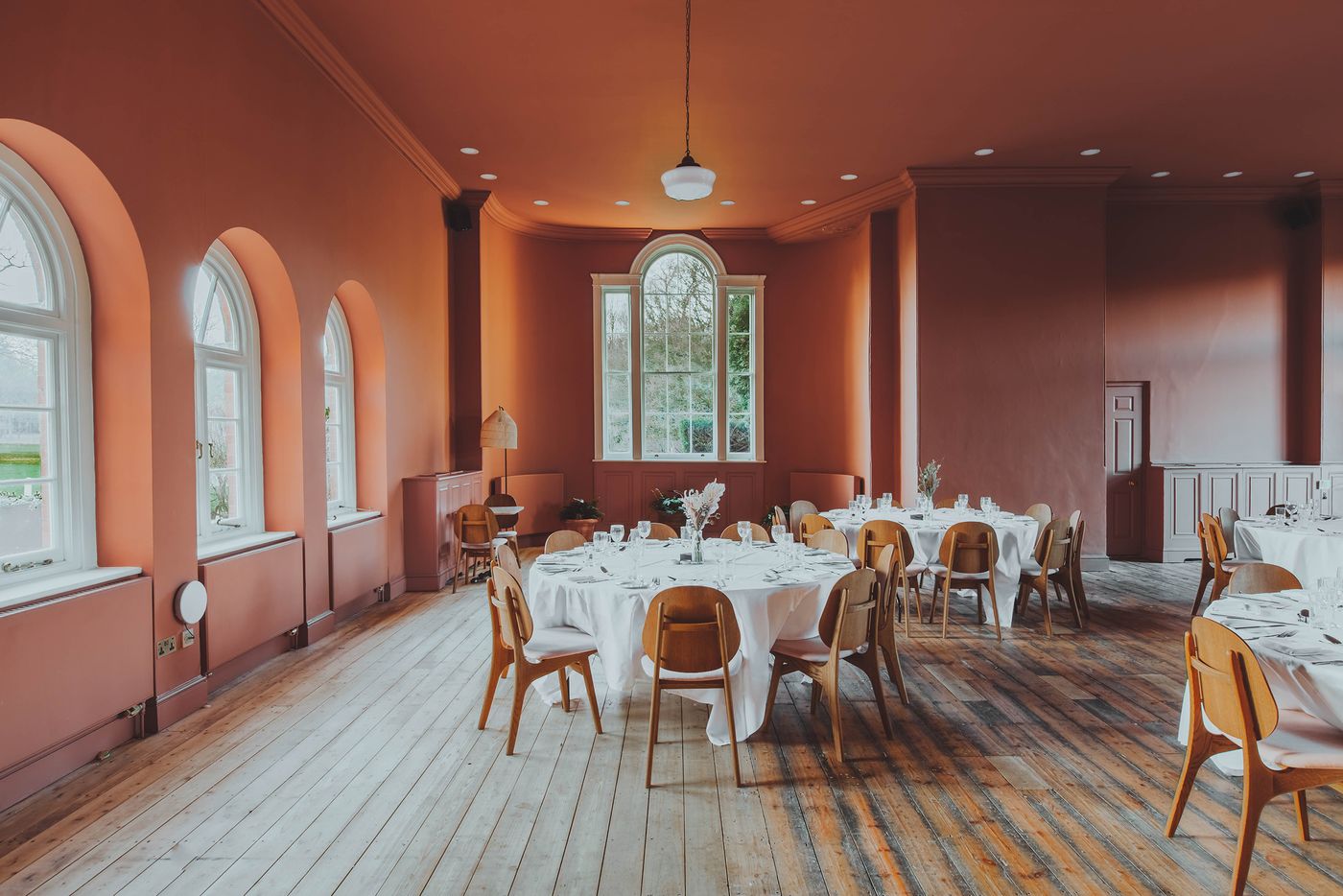
"Evelyn" multi-purpose space. Photo by Adam Firman.
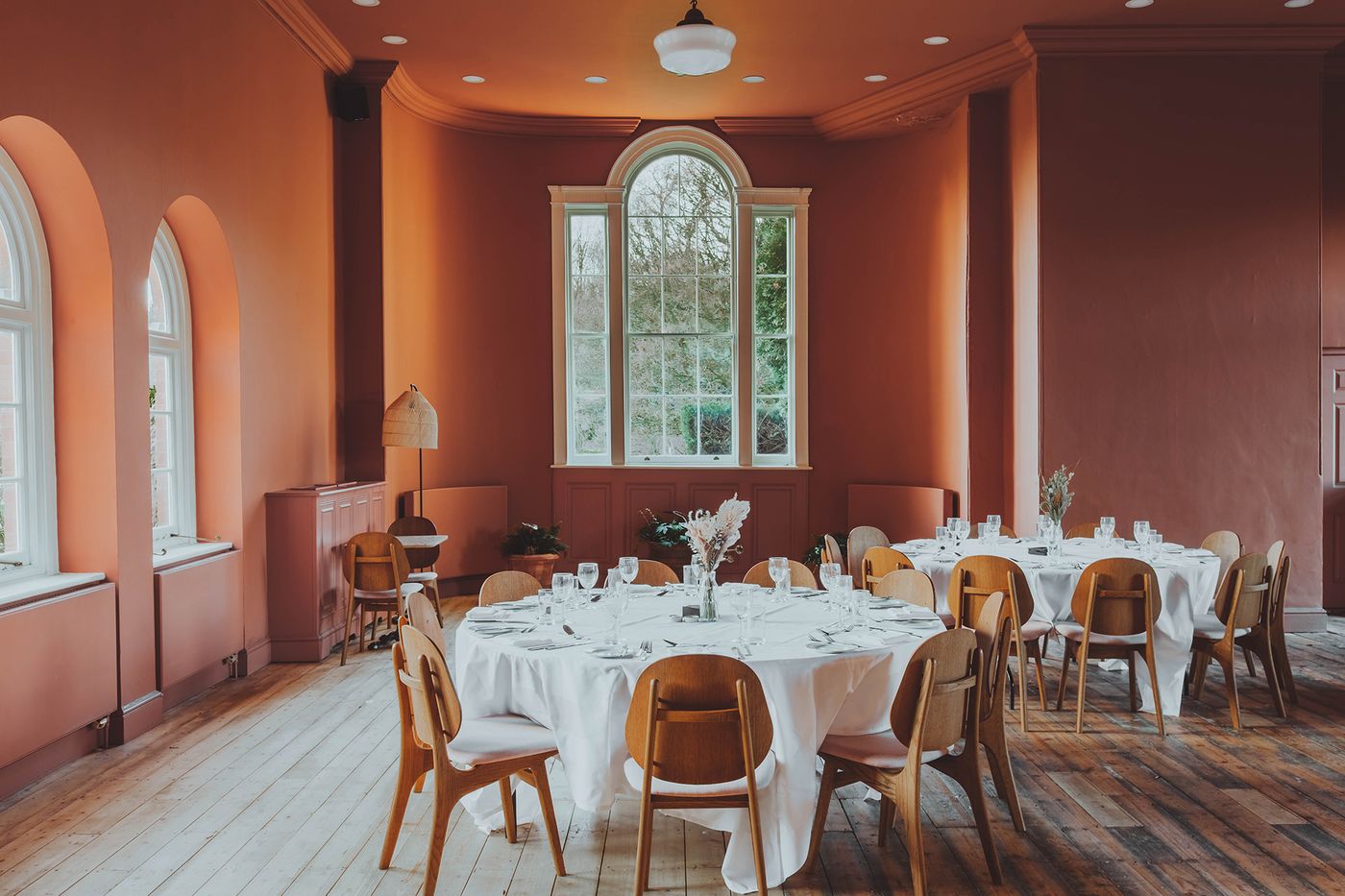
"Evelyn" multi-purpose space. Photo by Adam Firman.
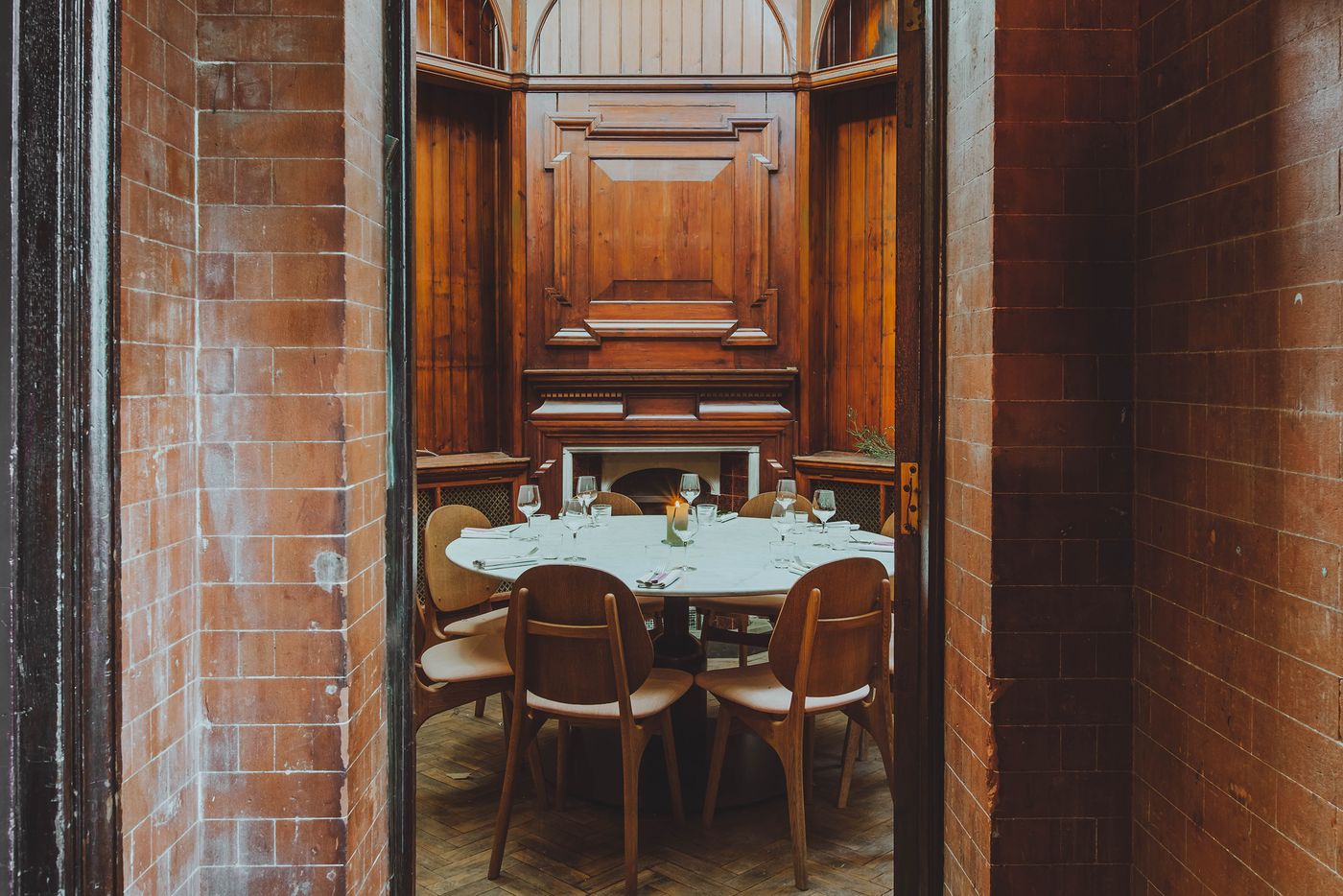
"The Gun Room" - private dining. Photo by Adam Firman.